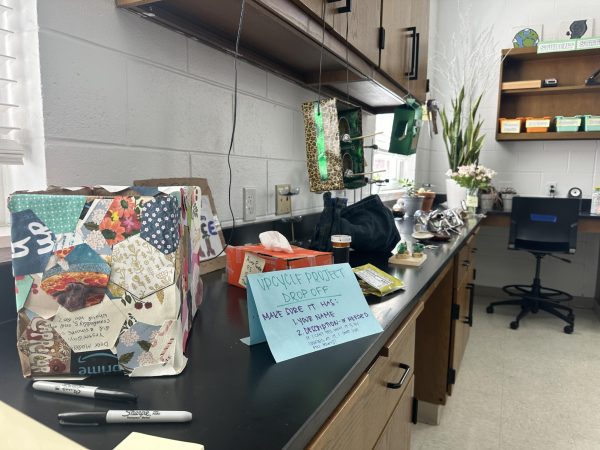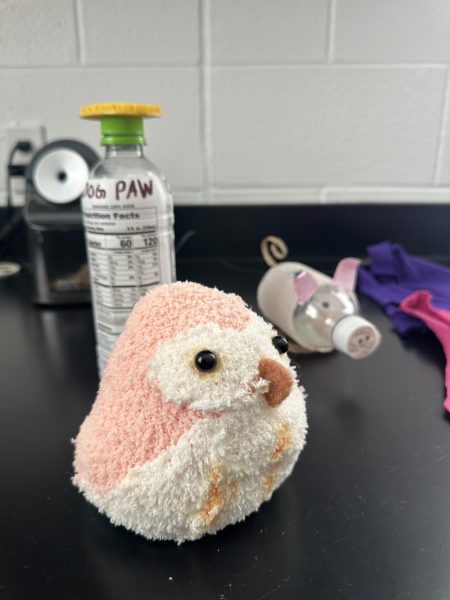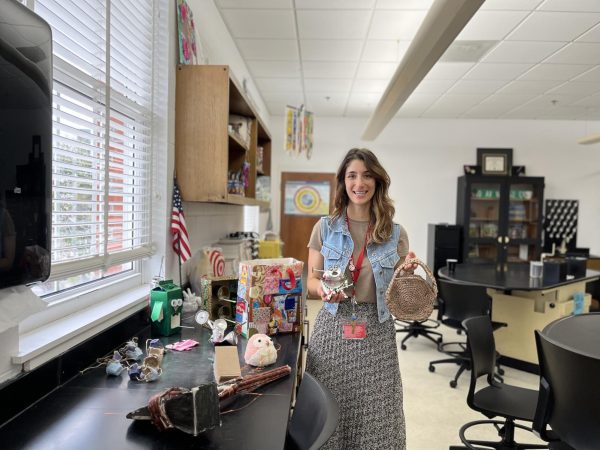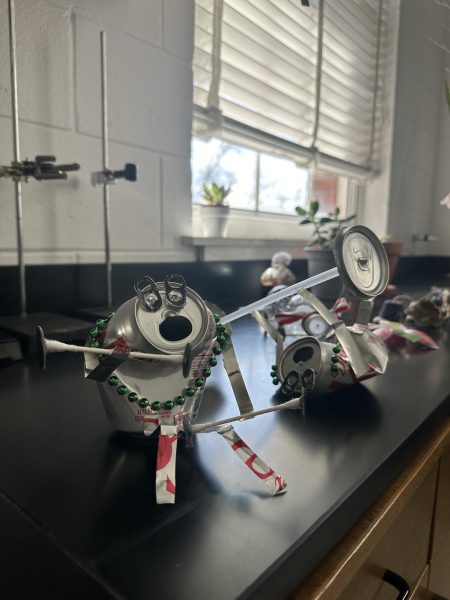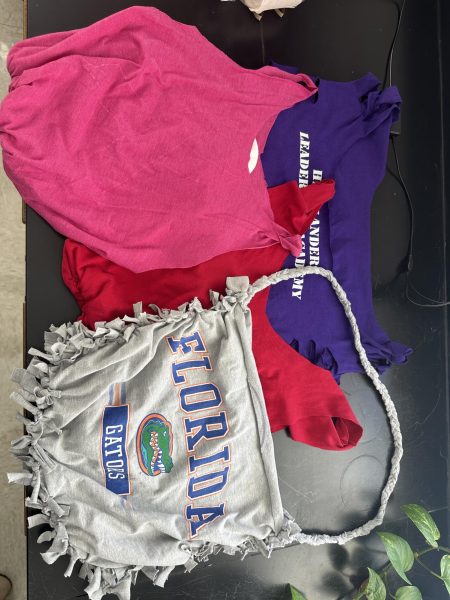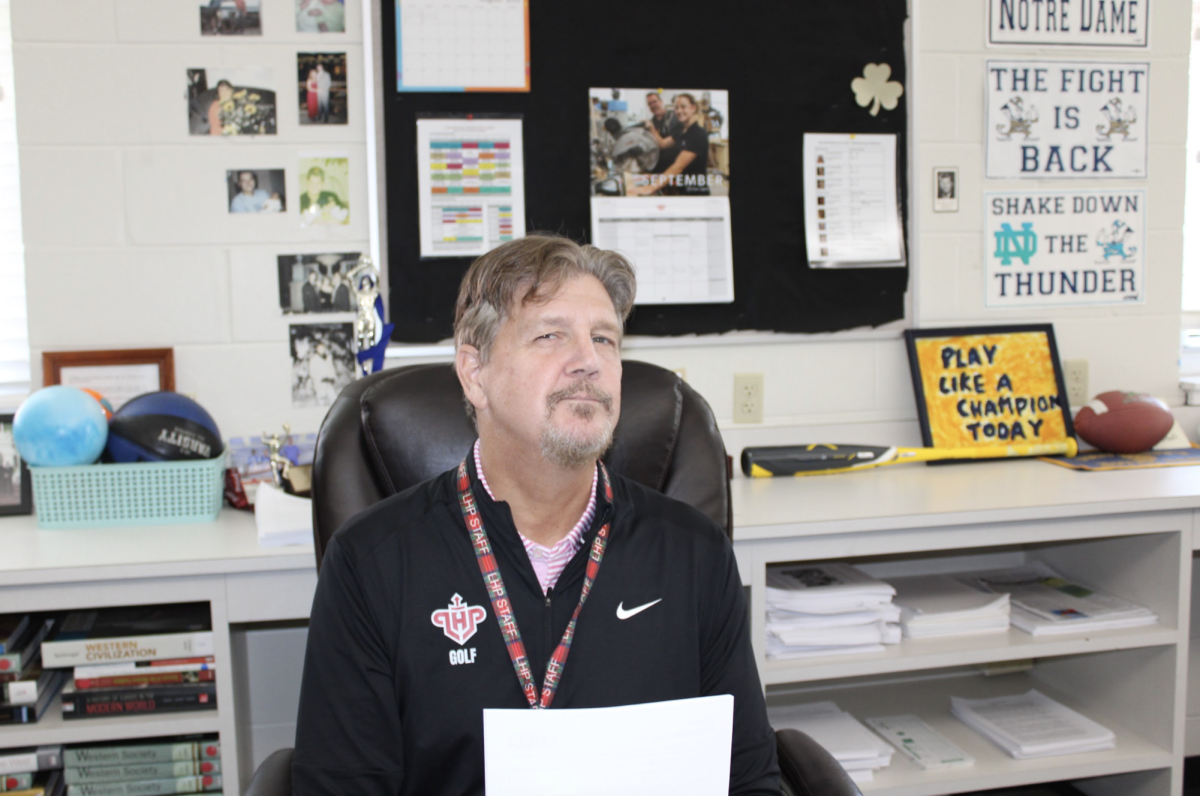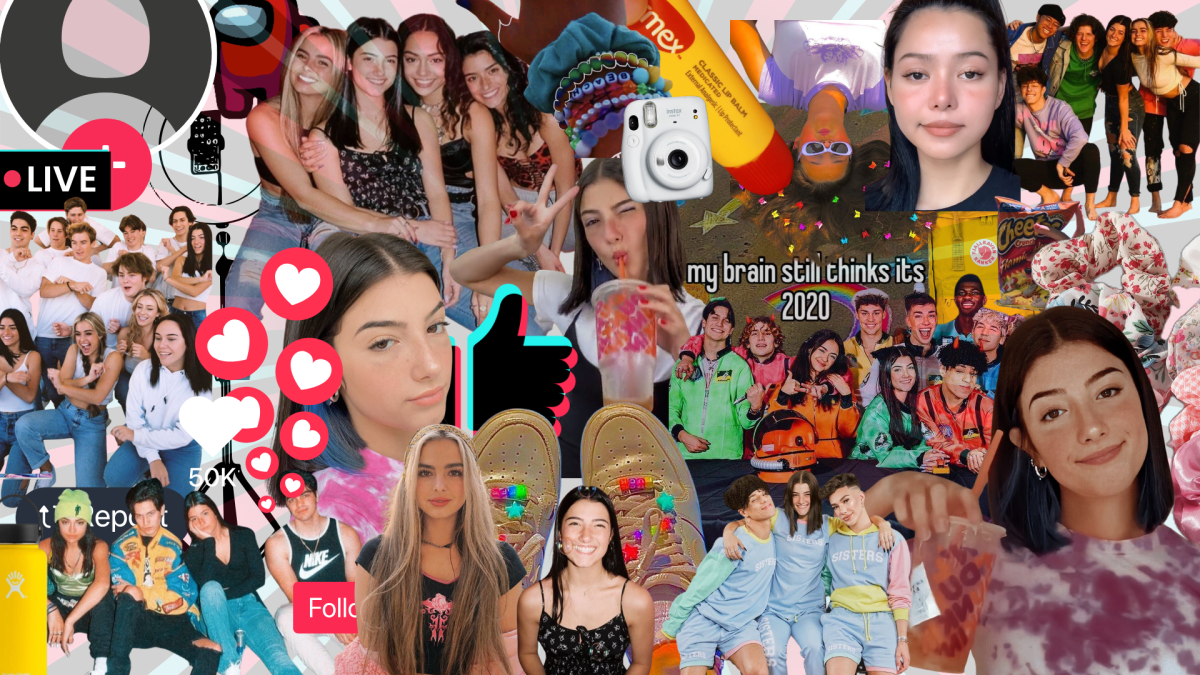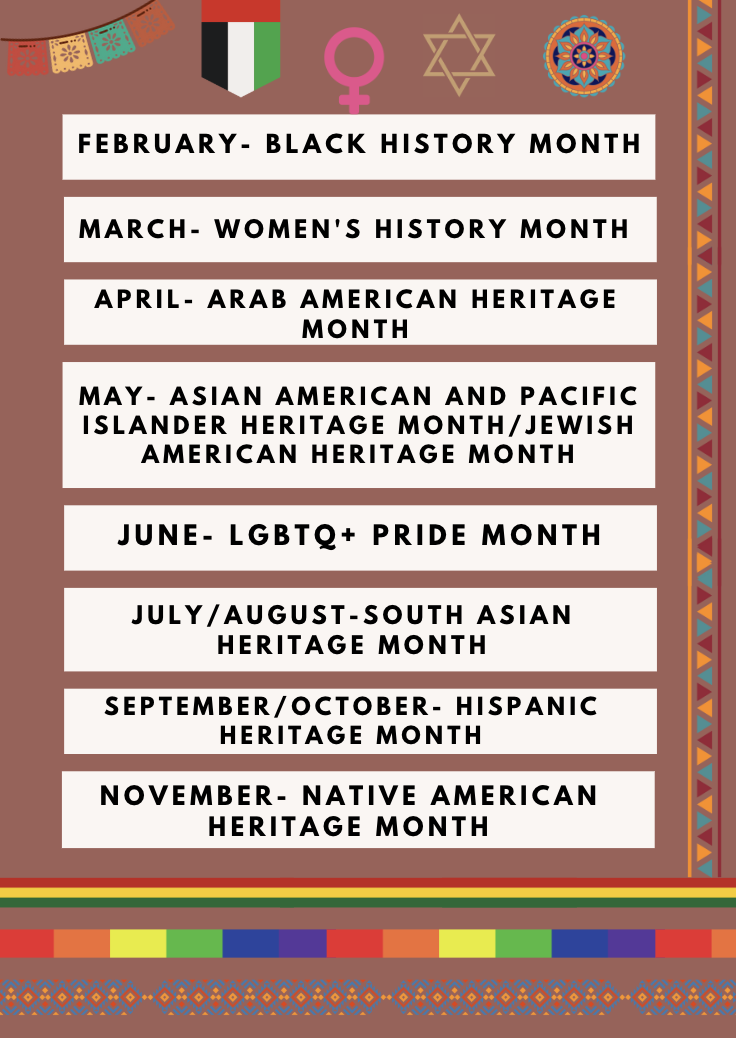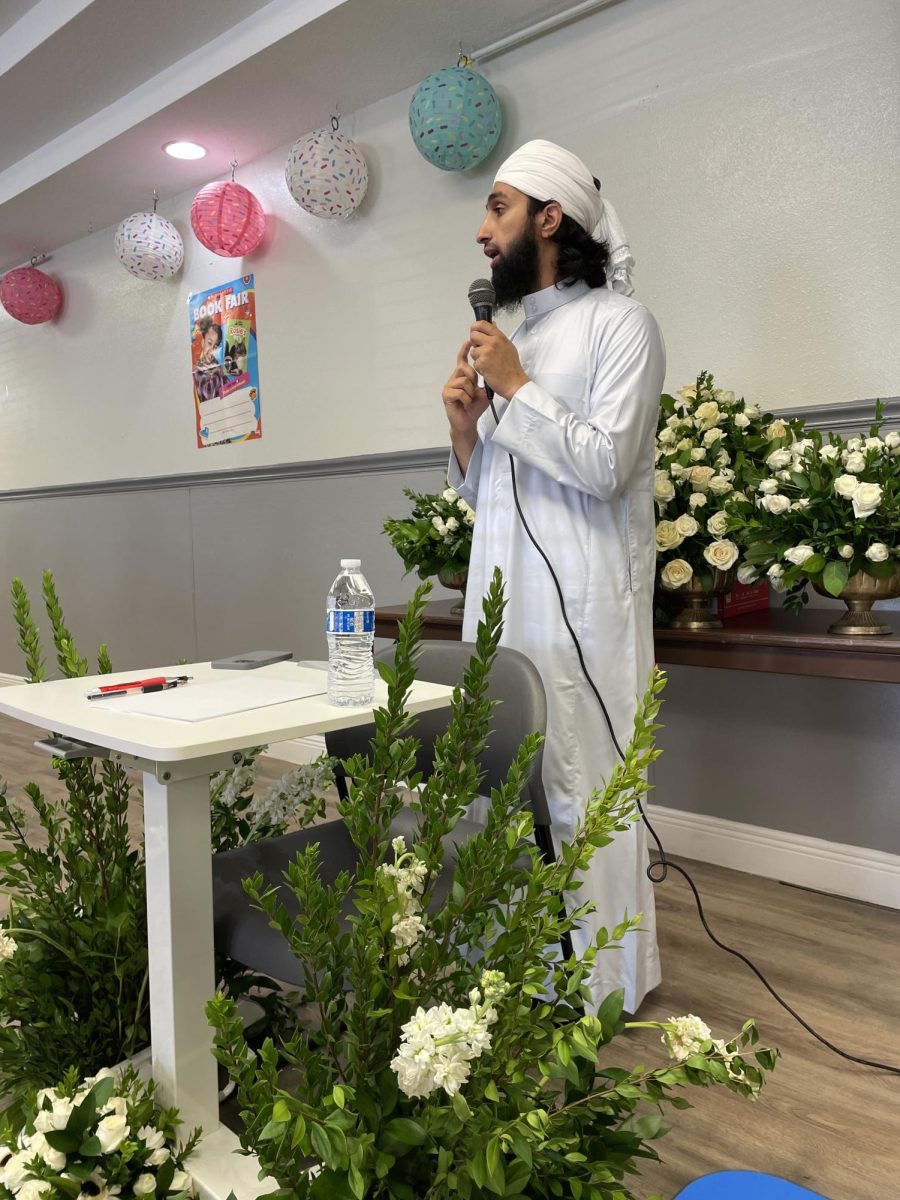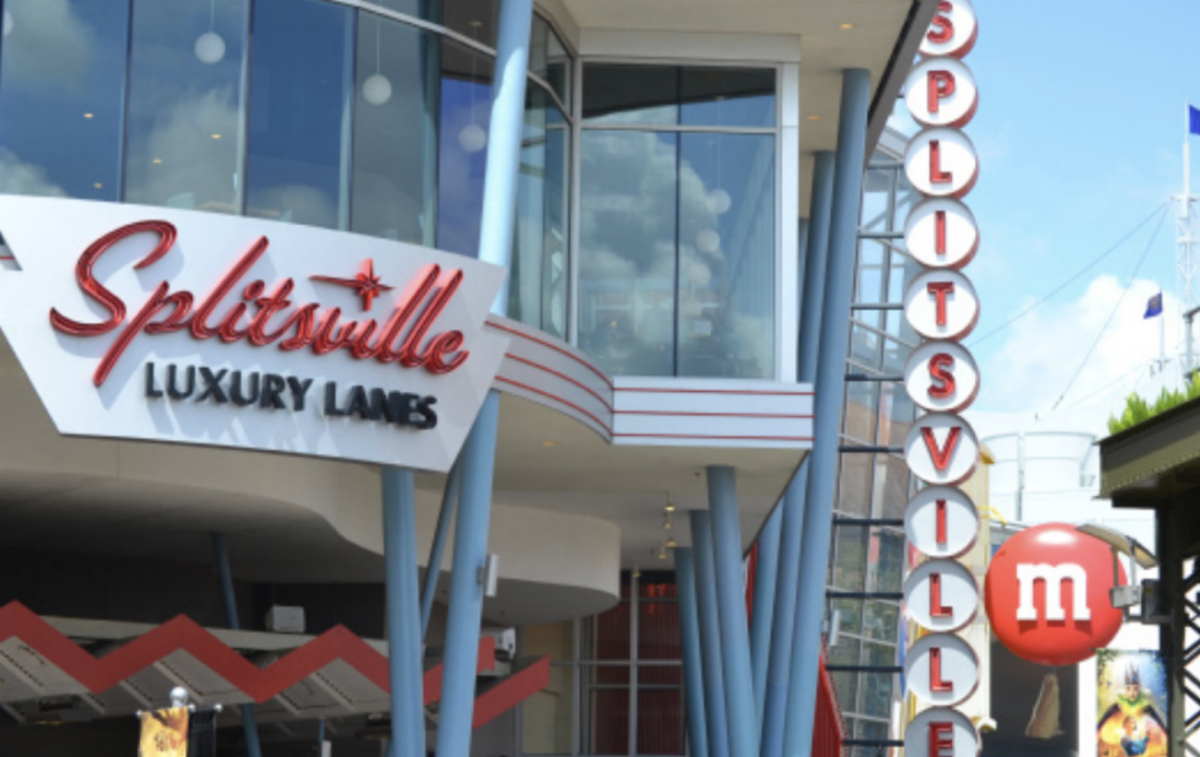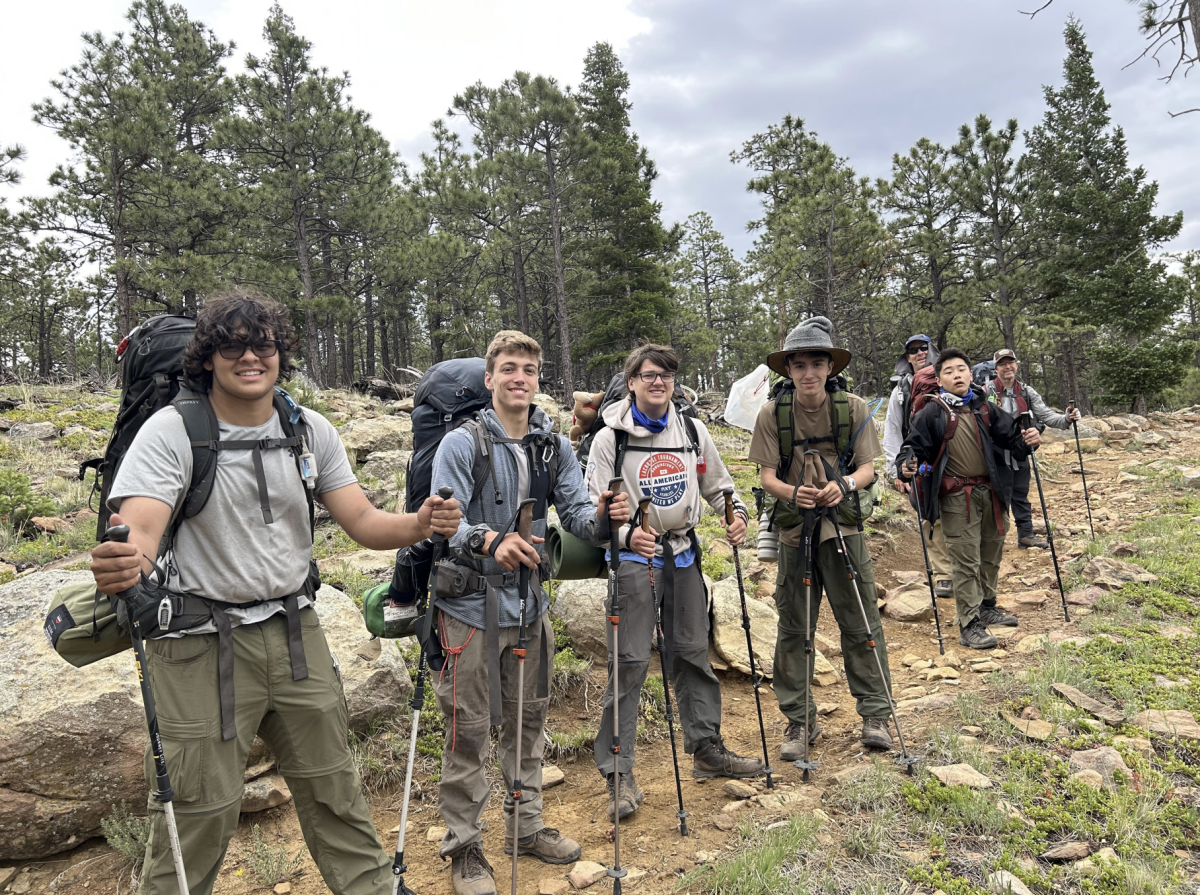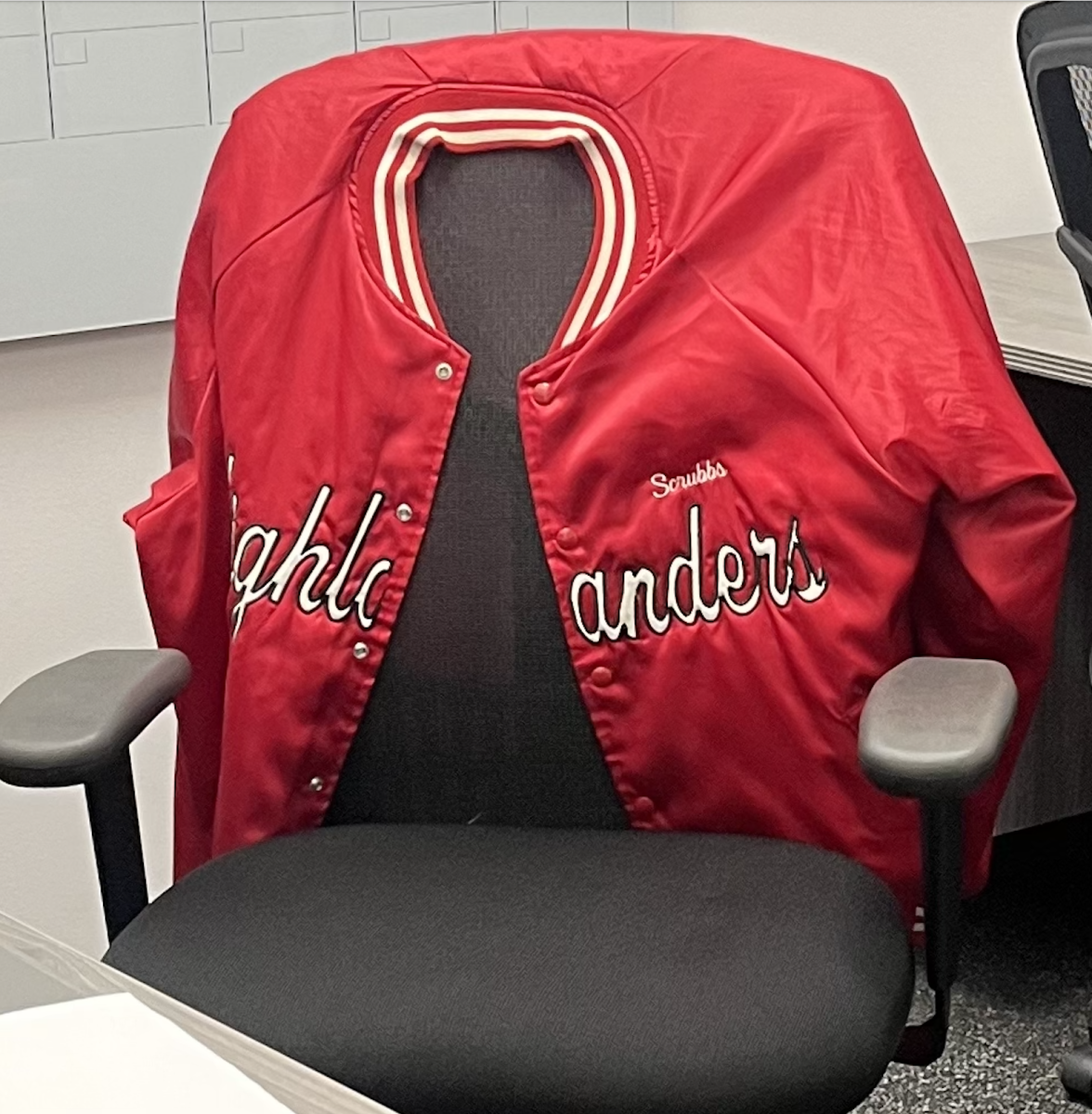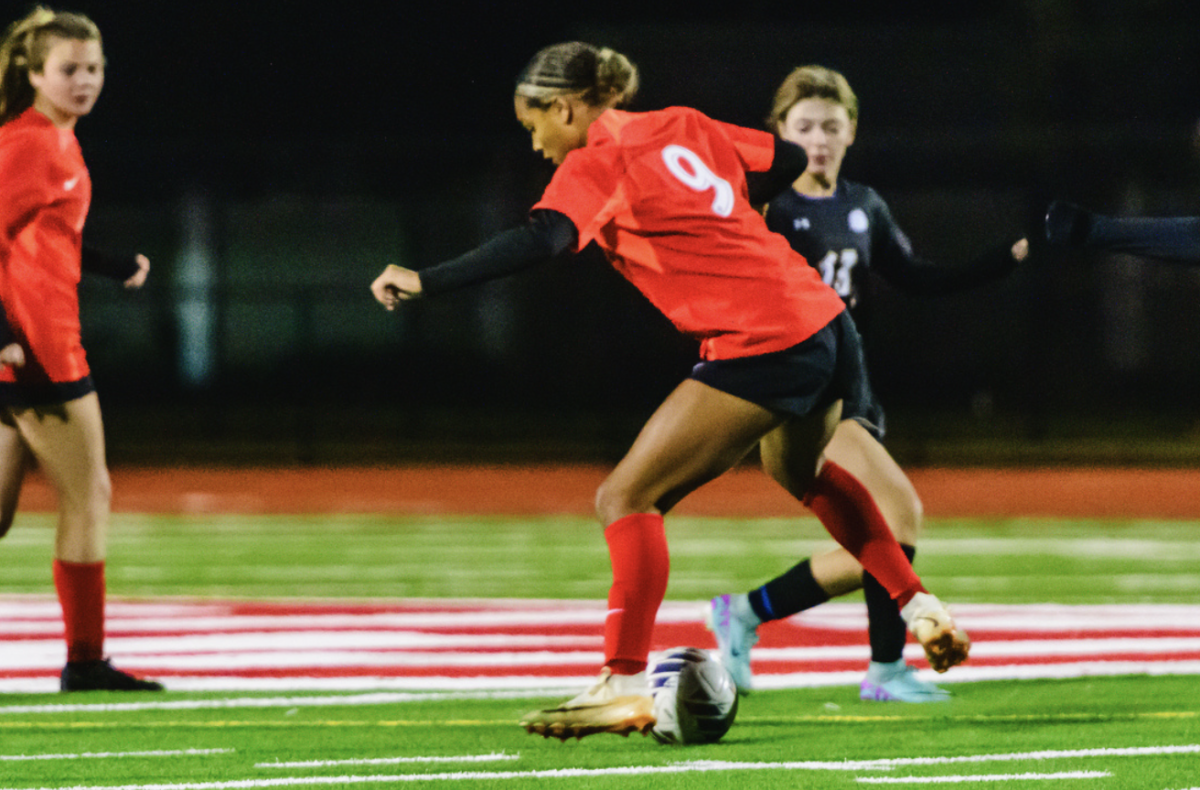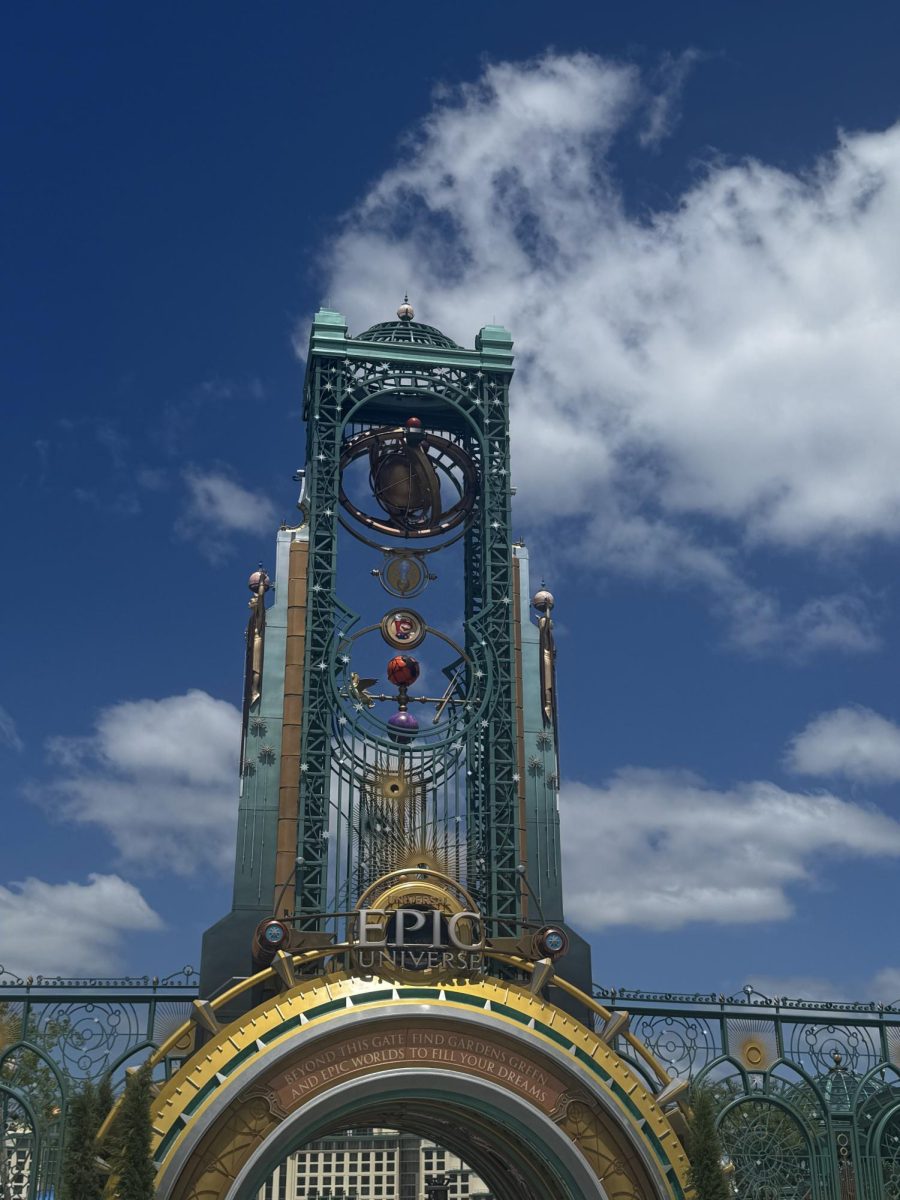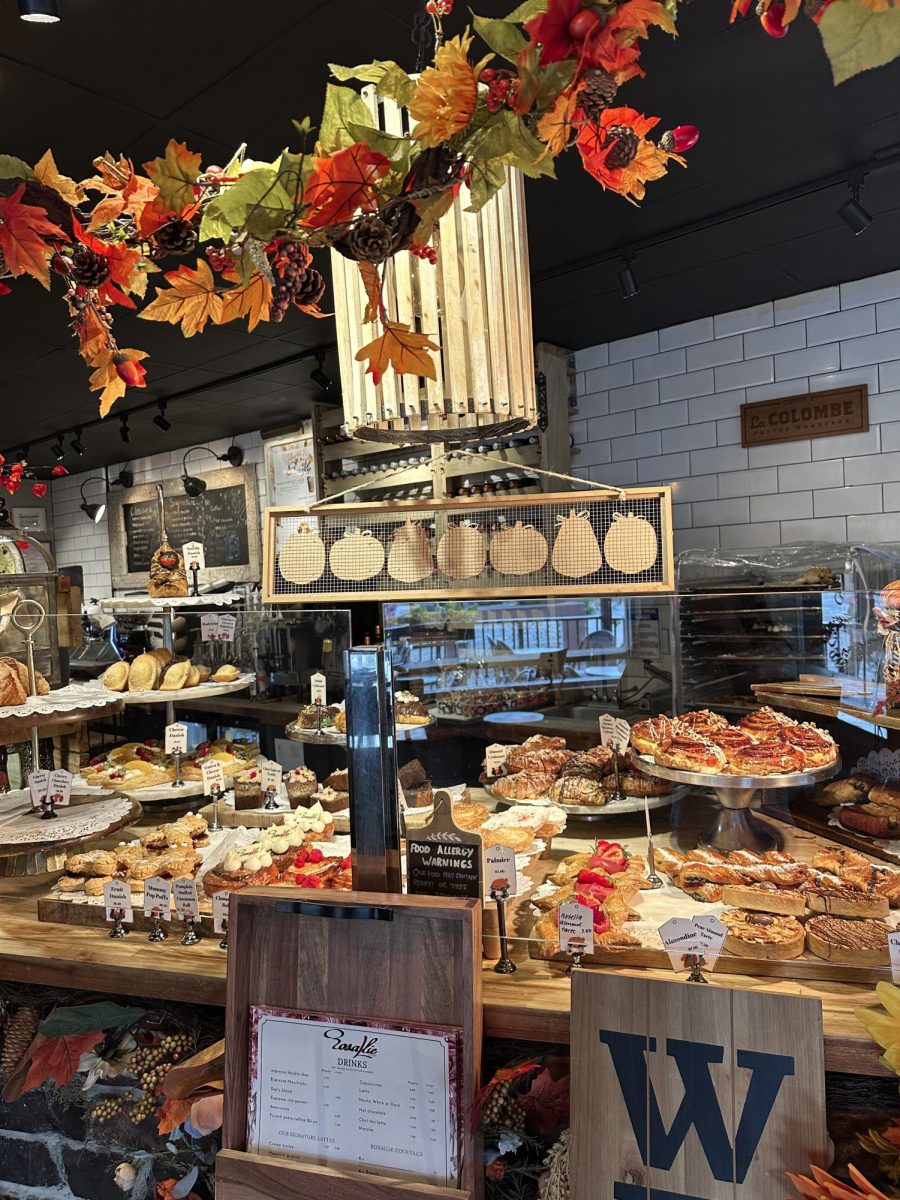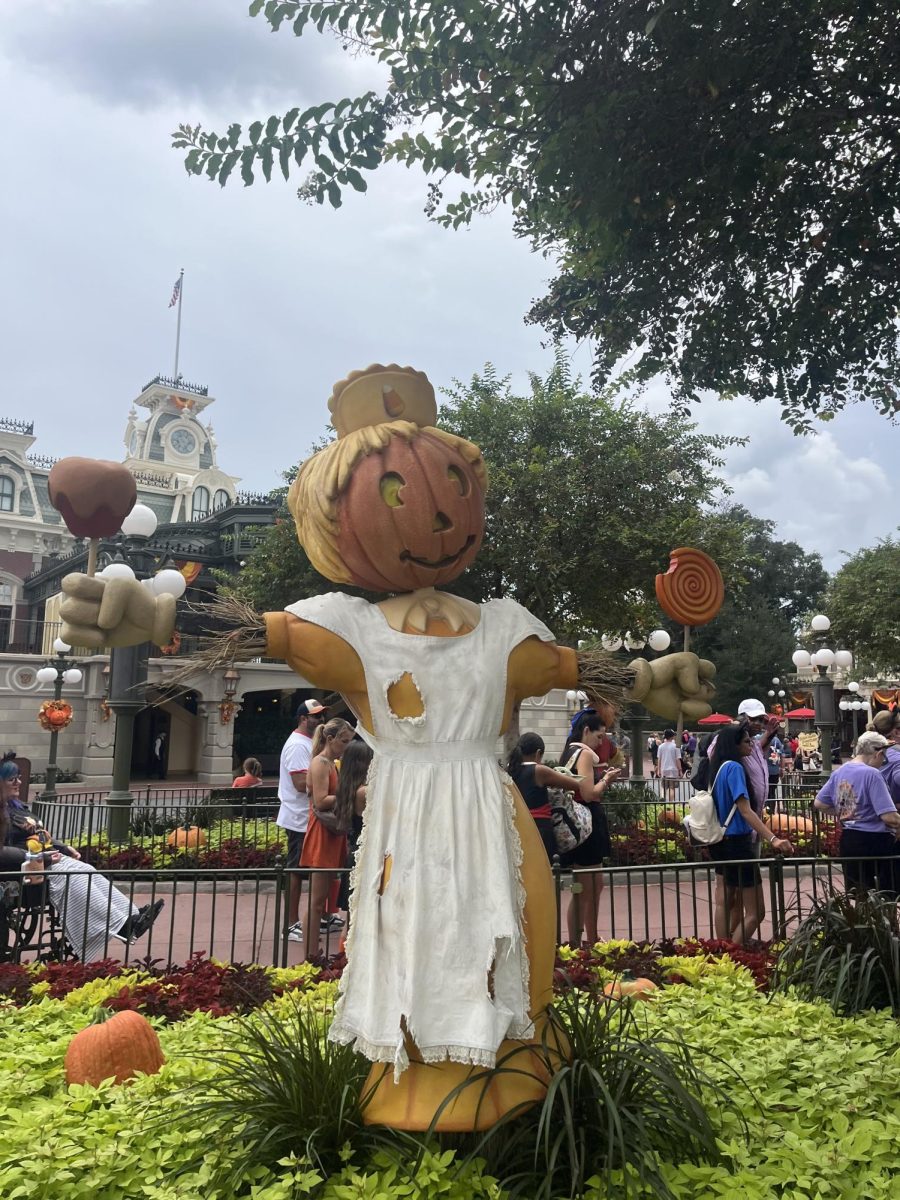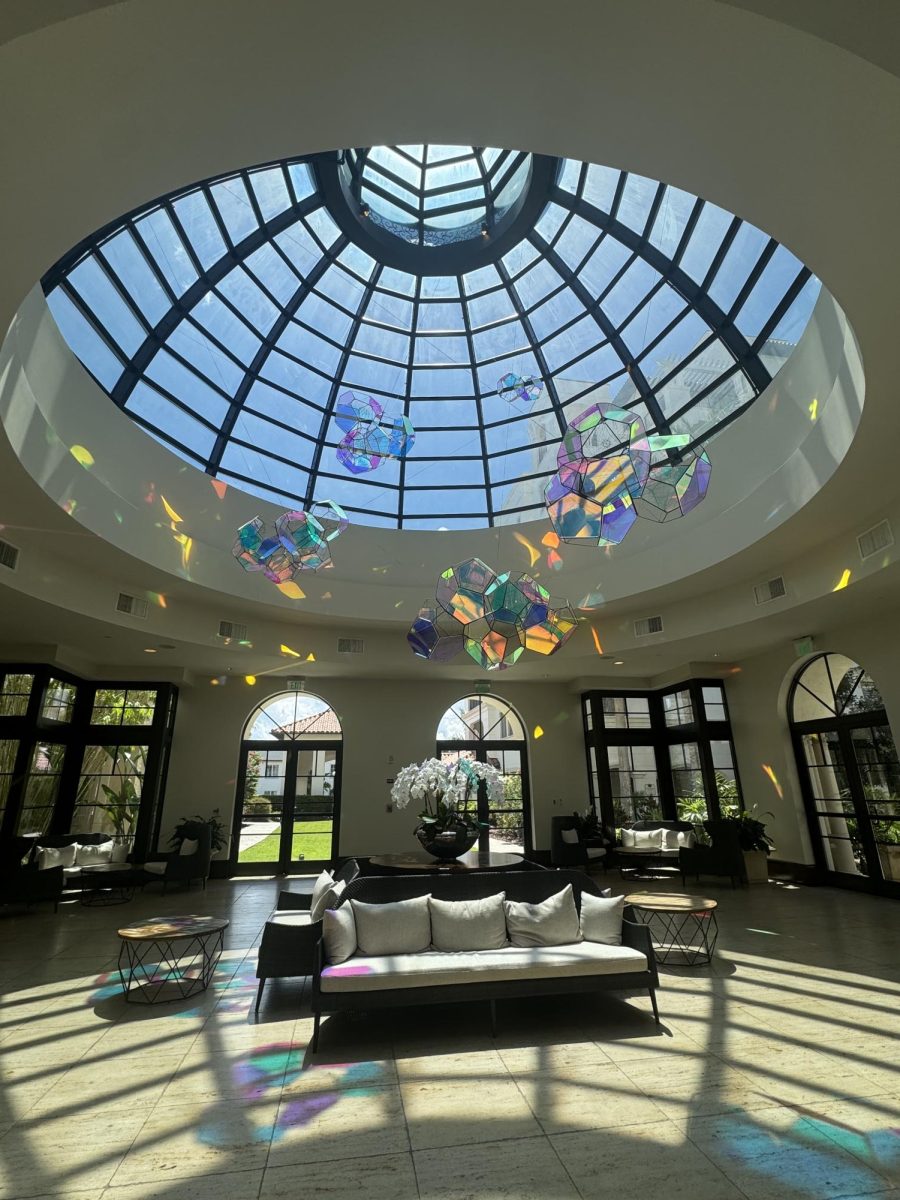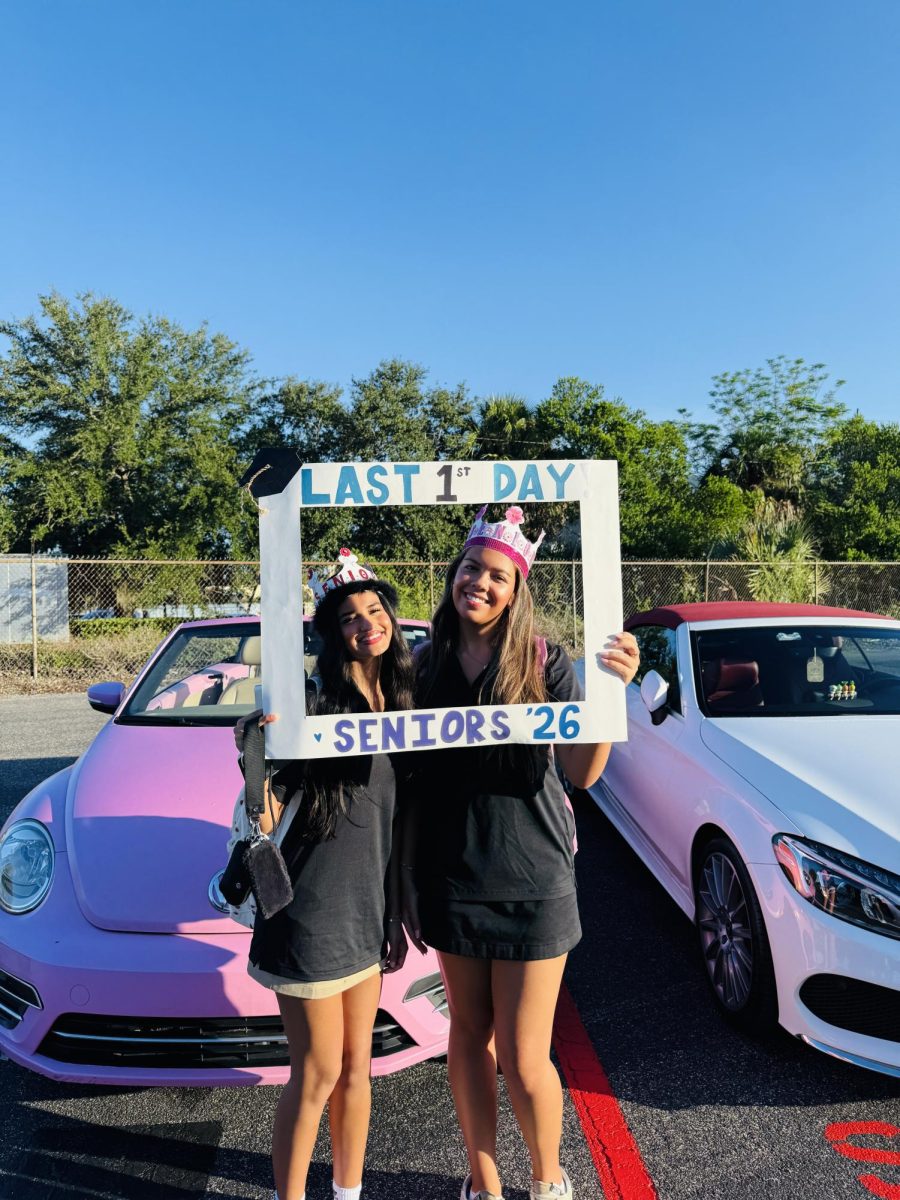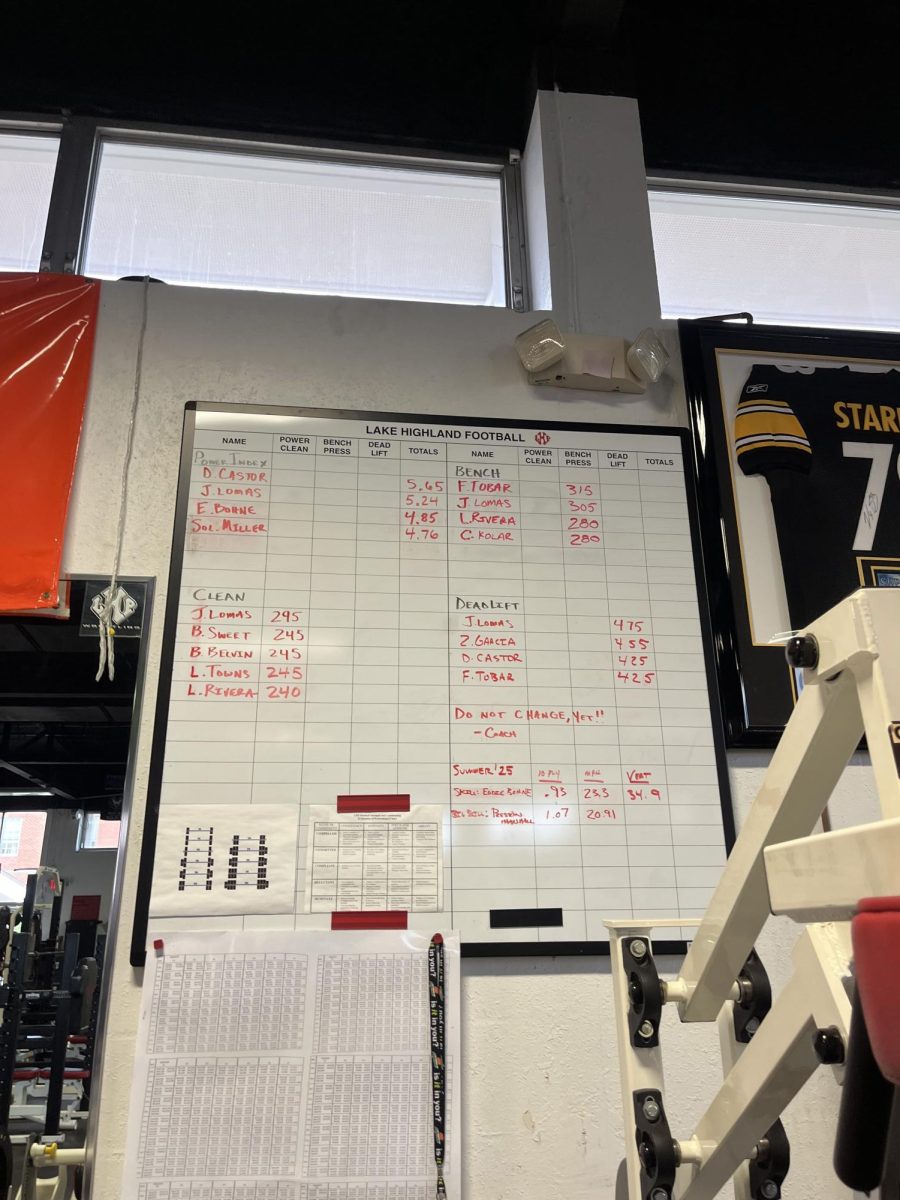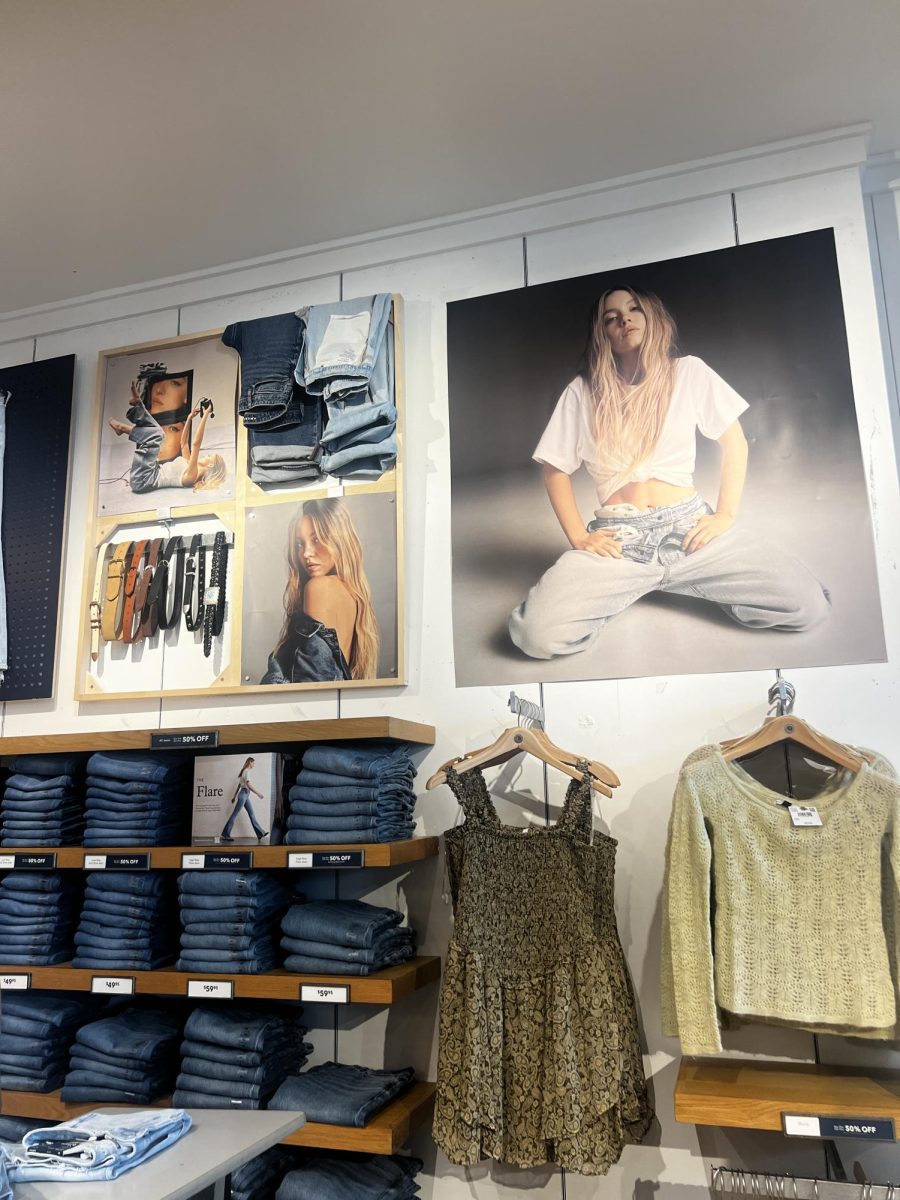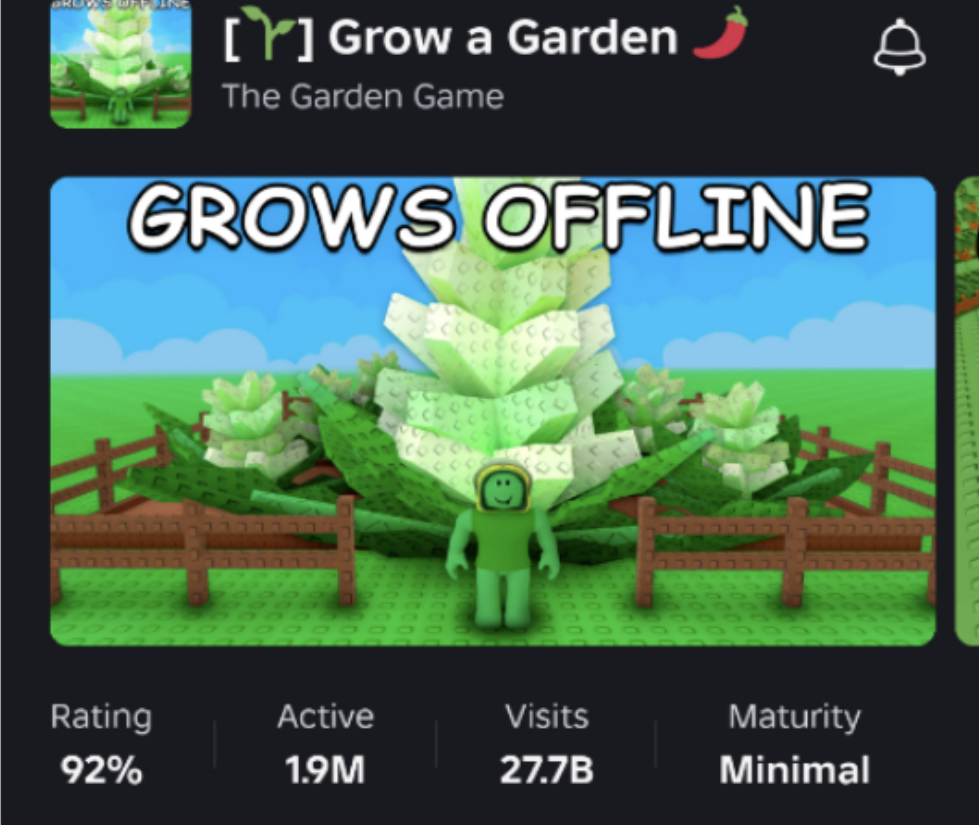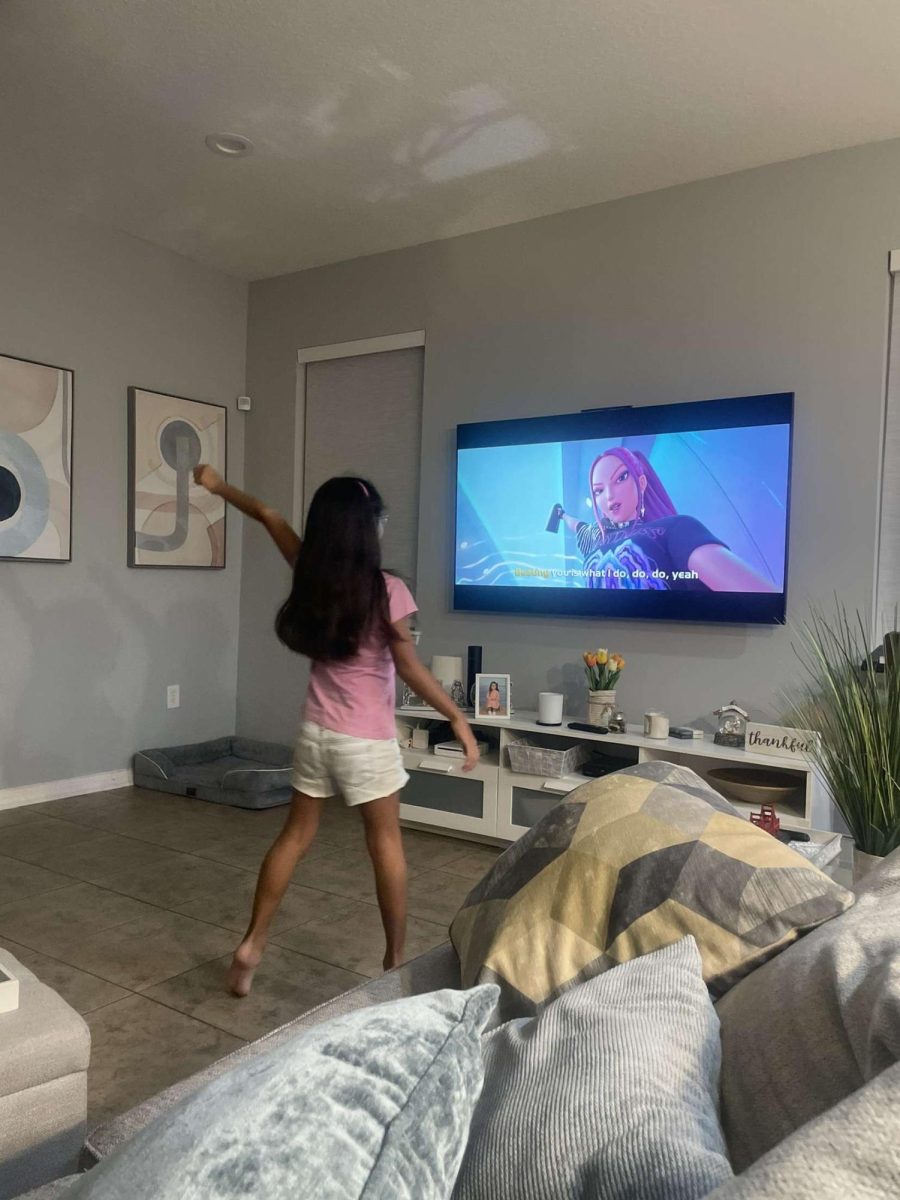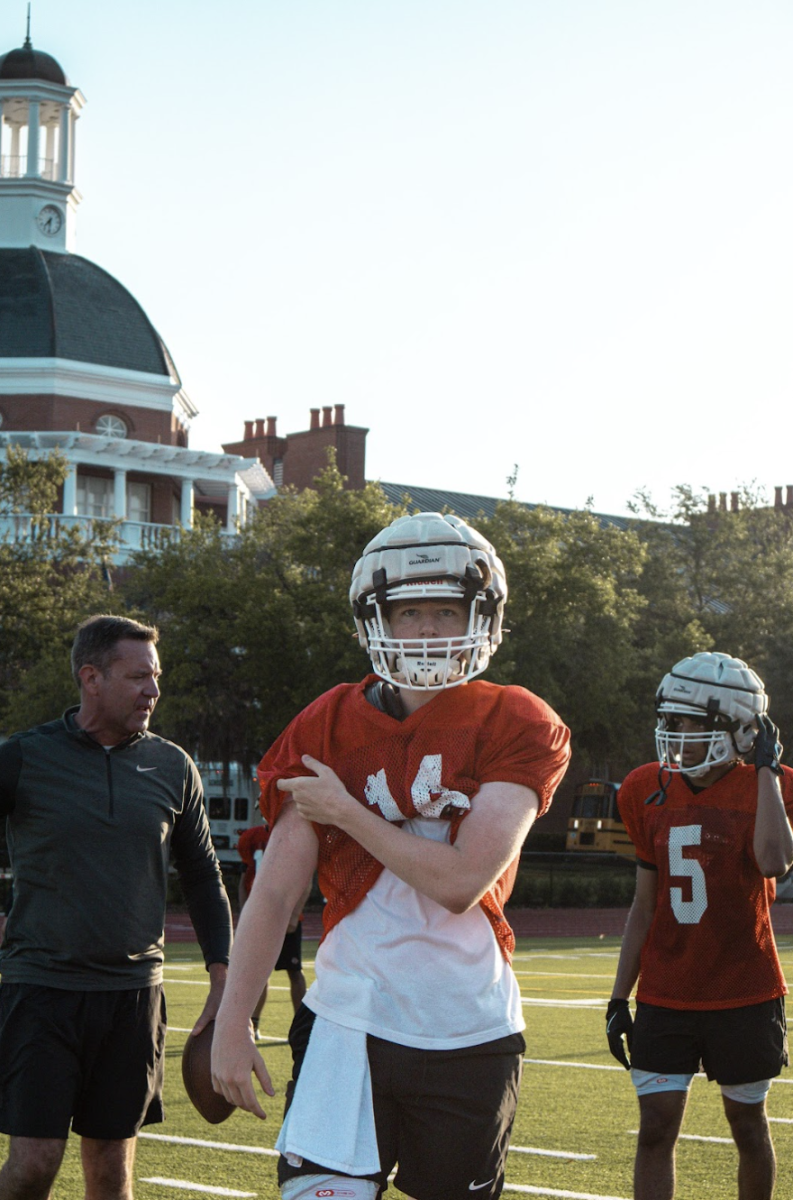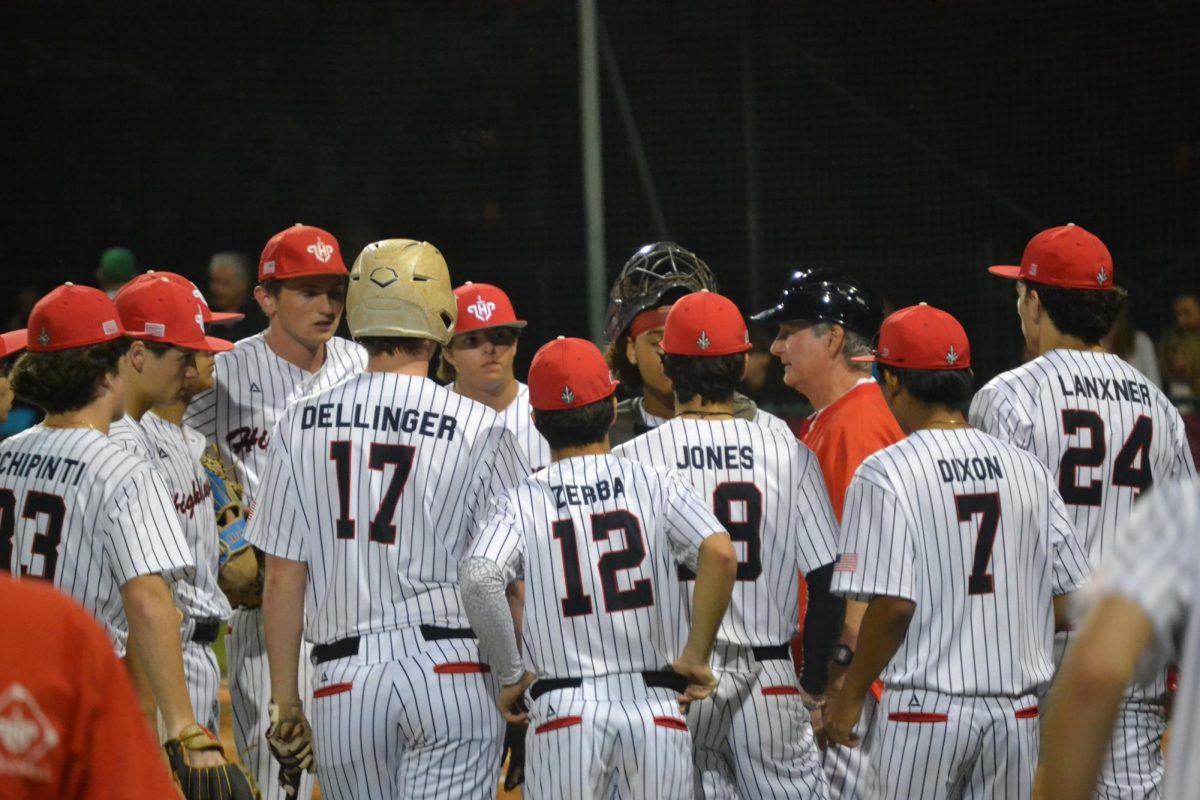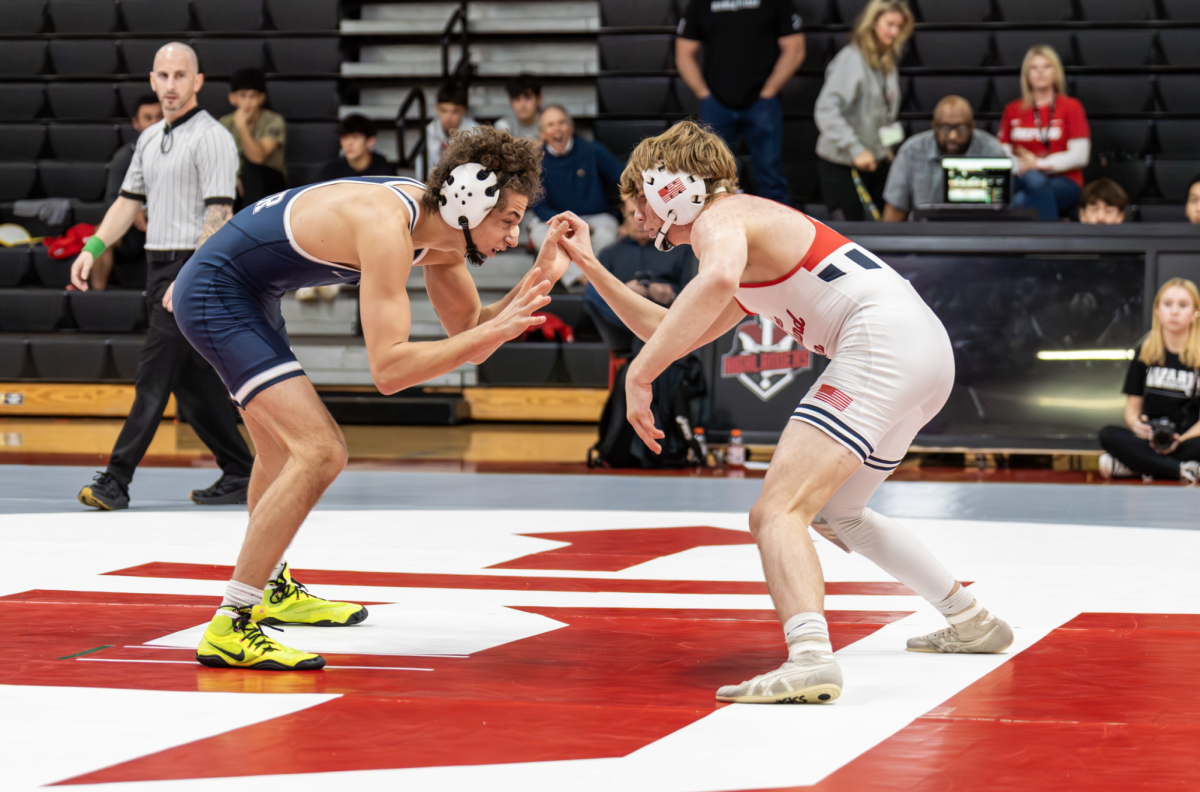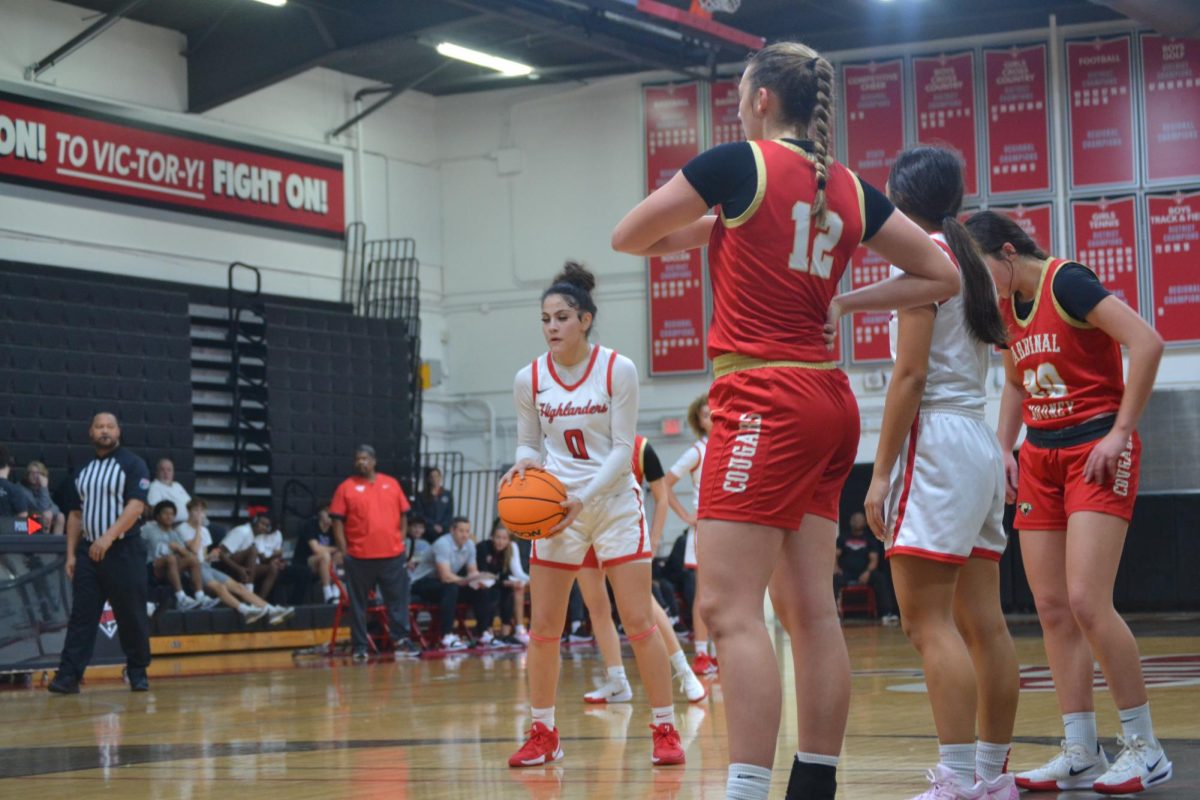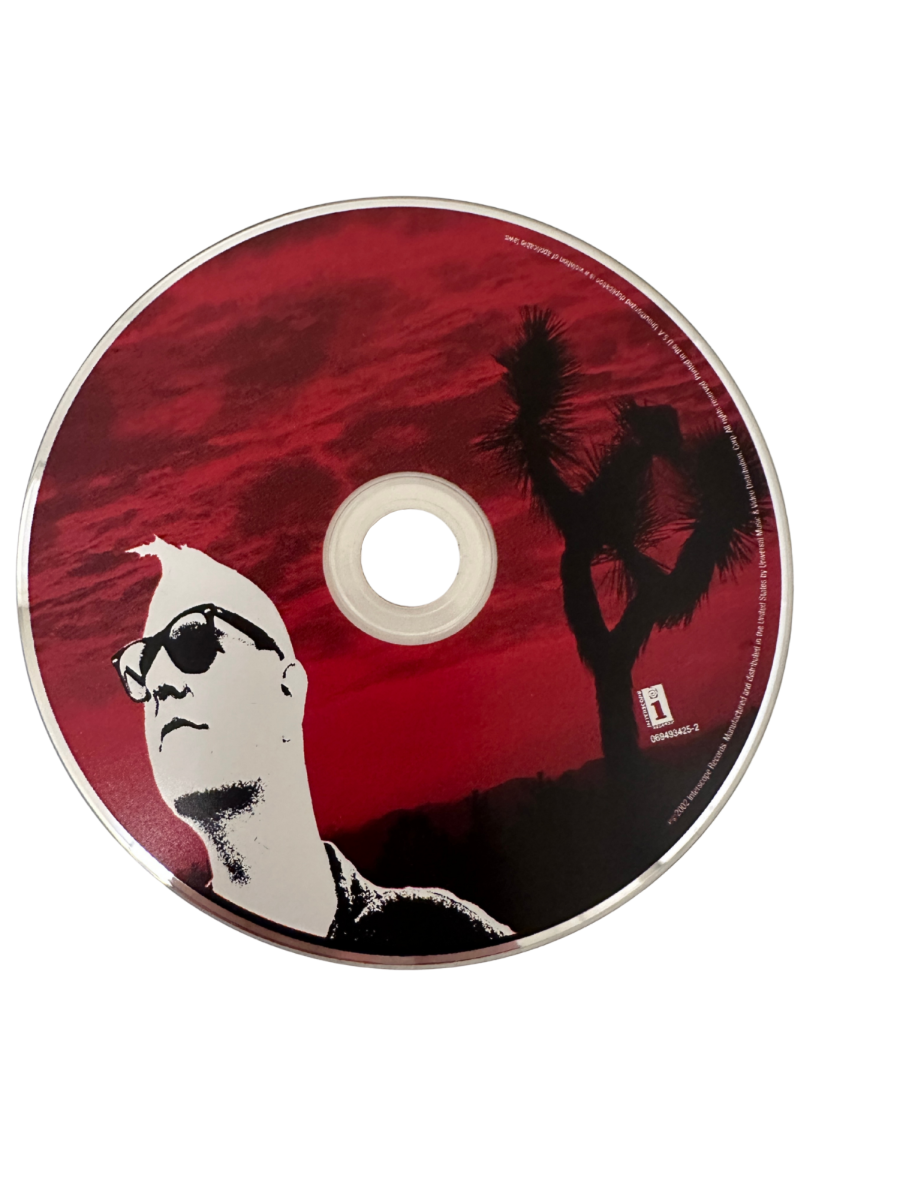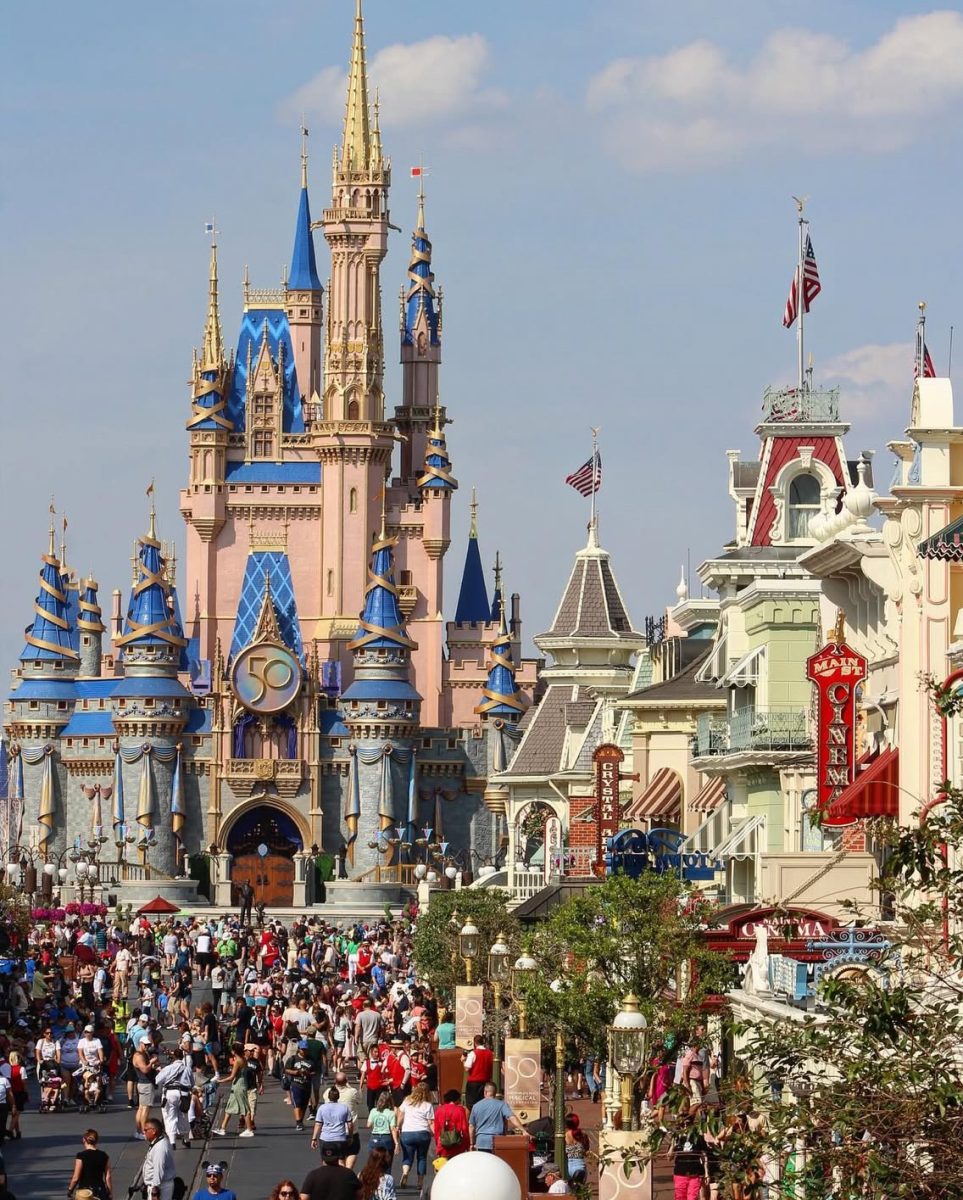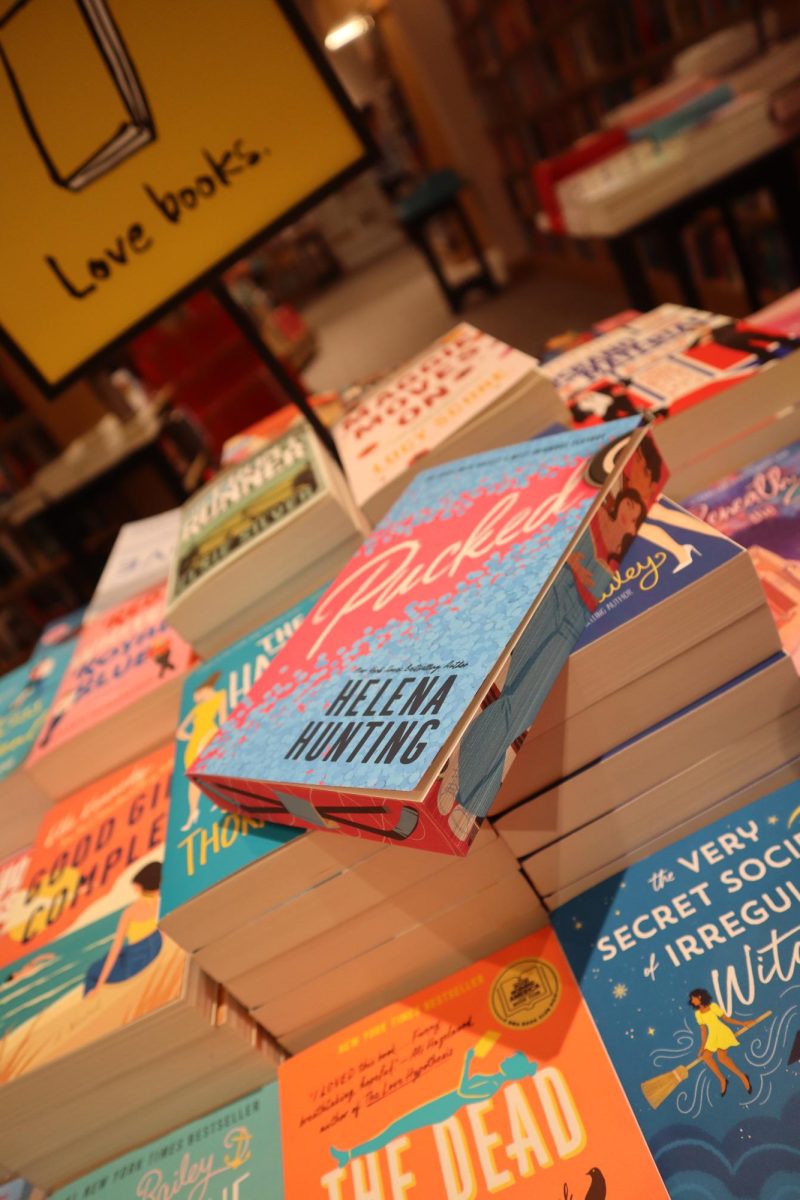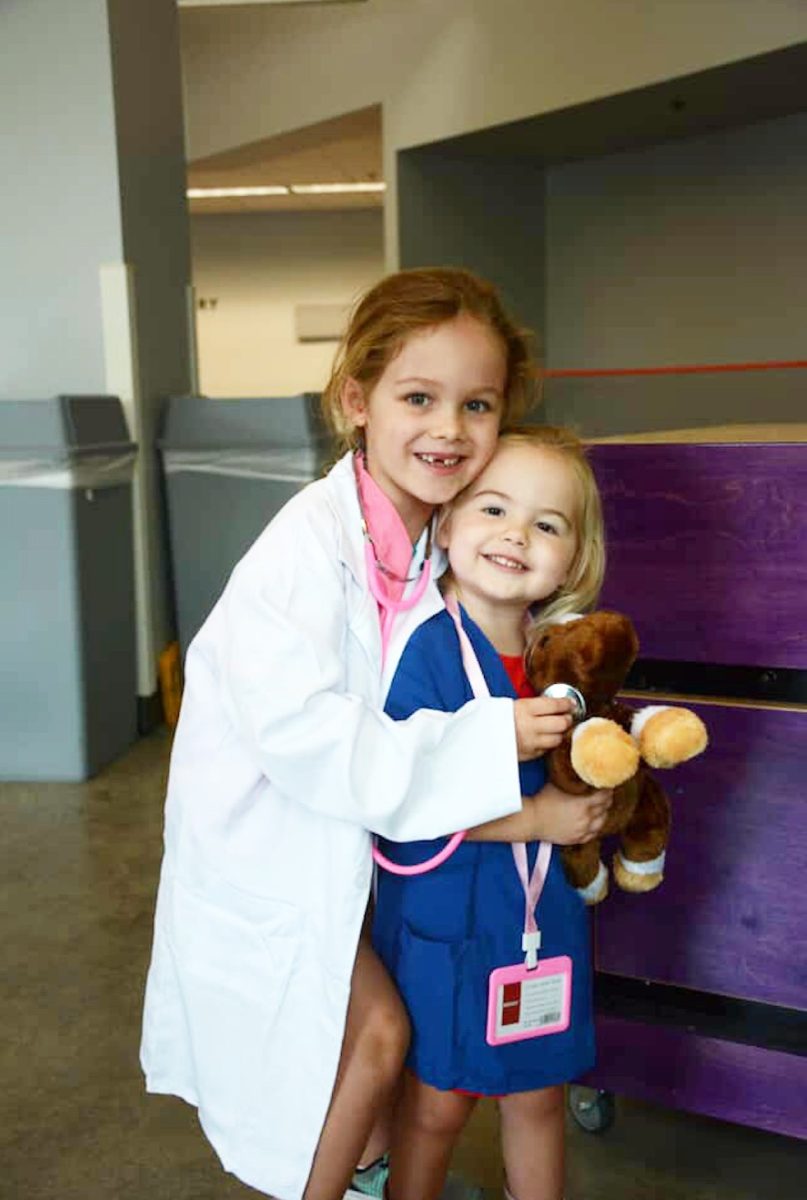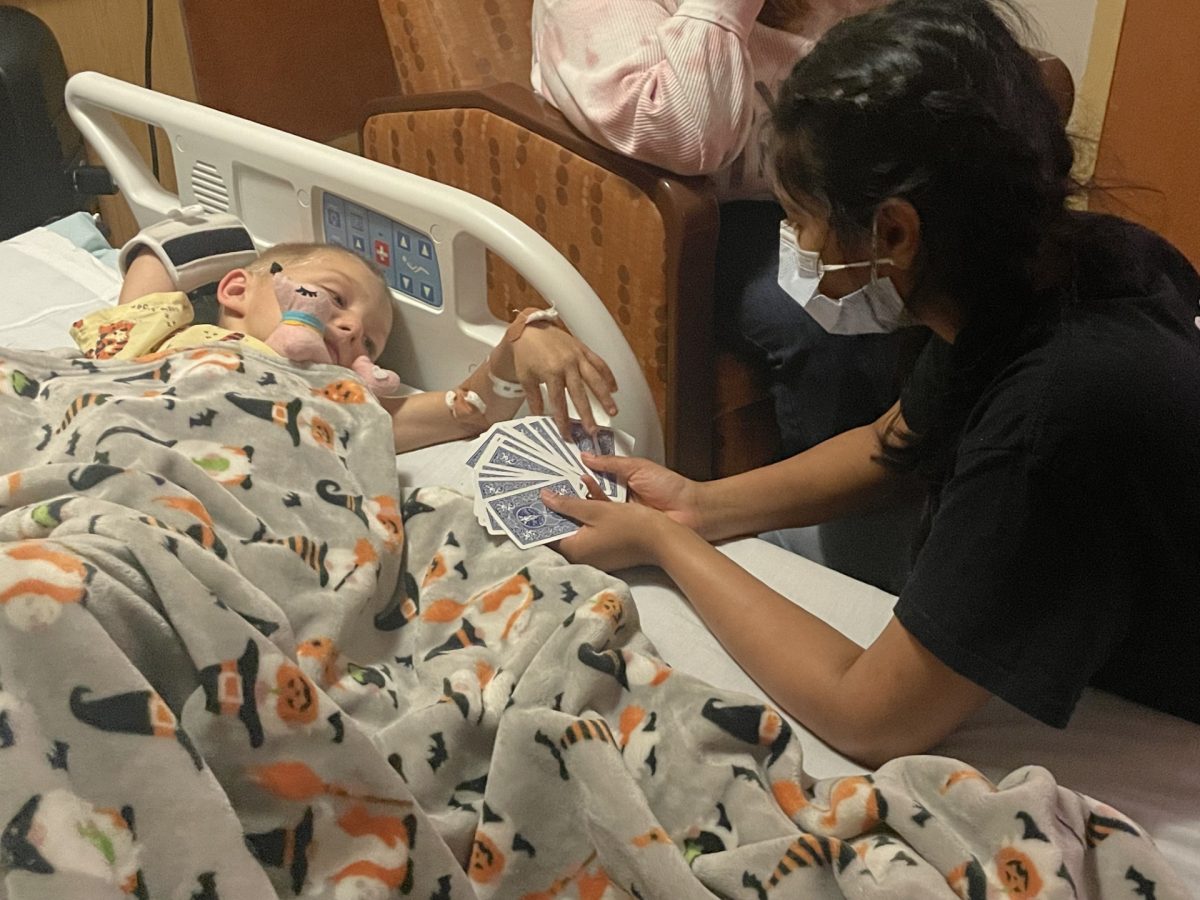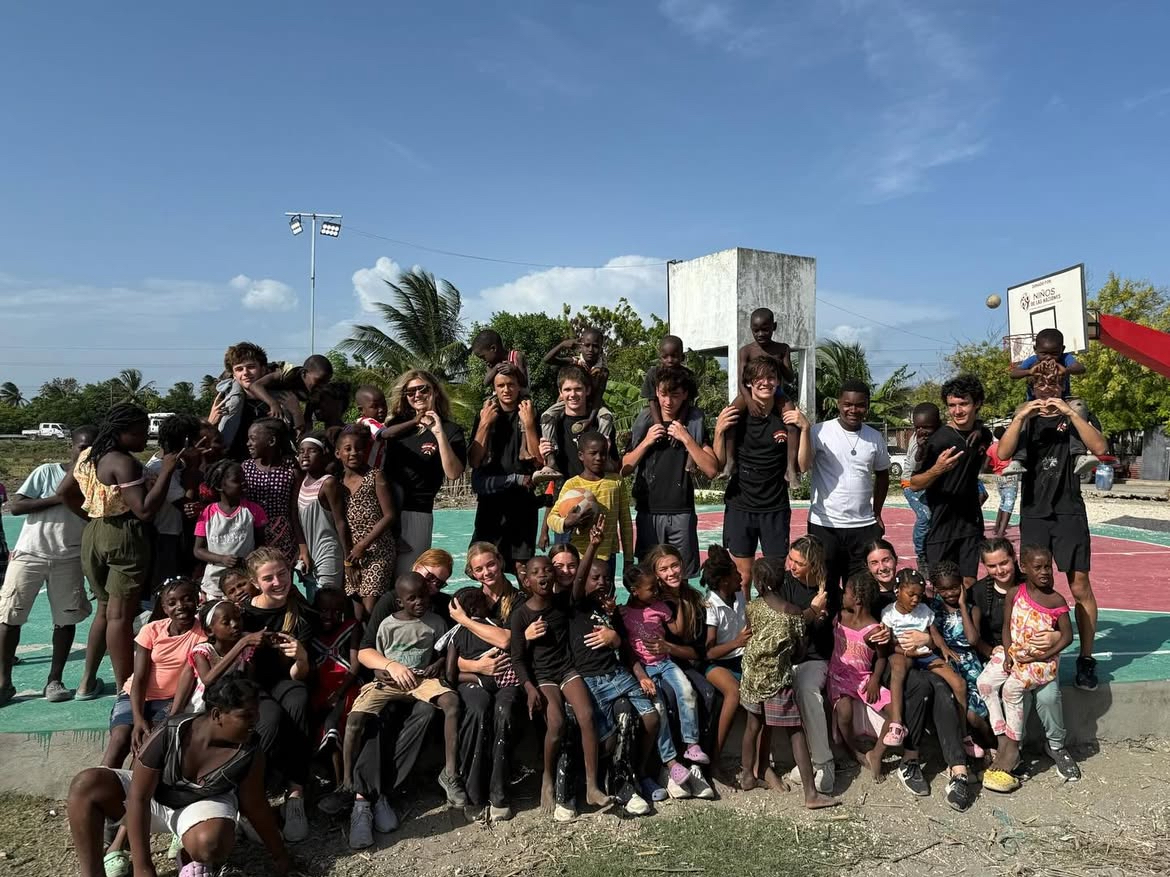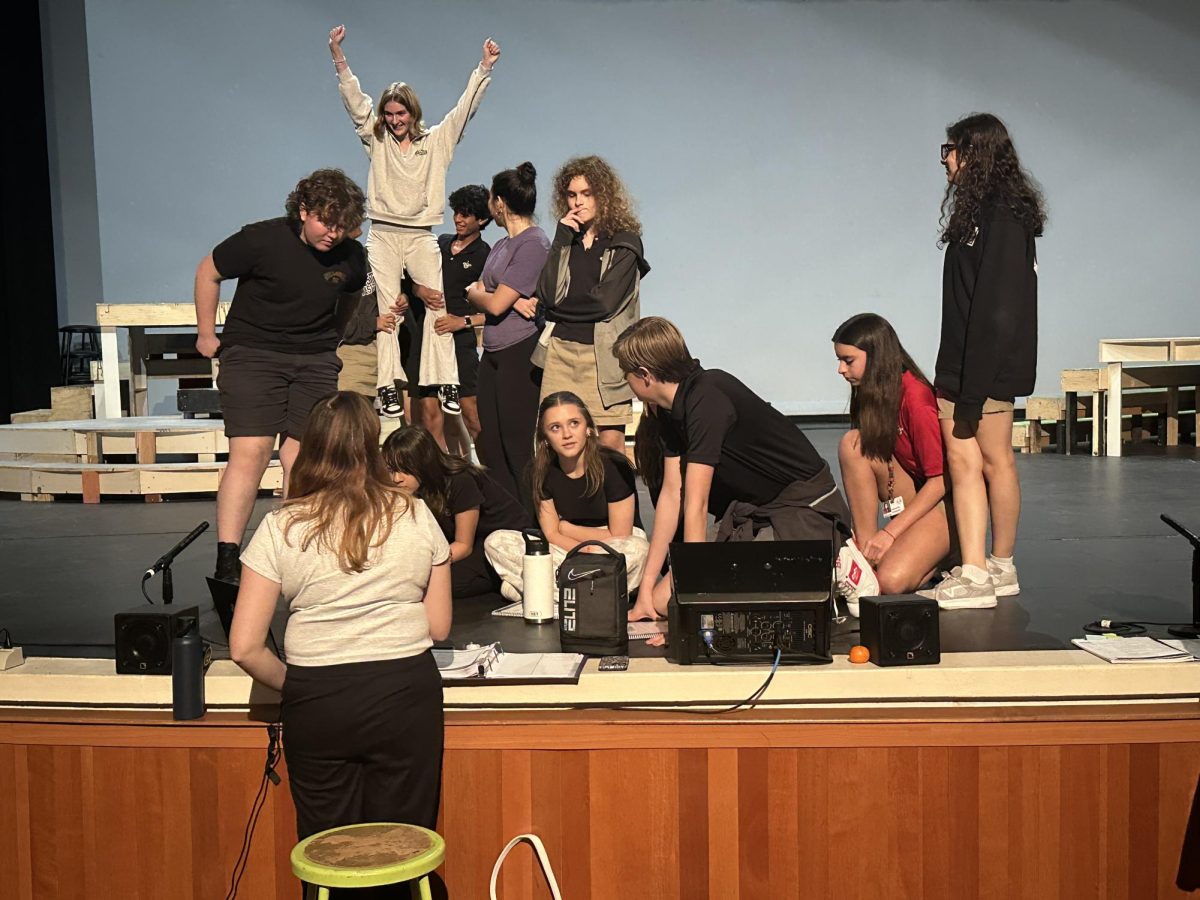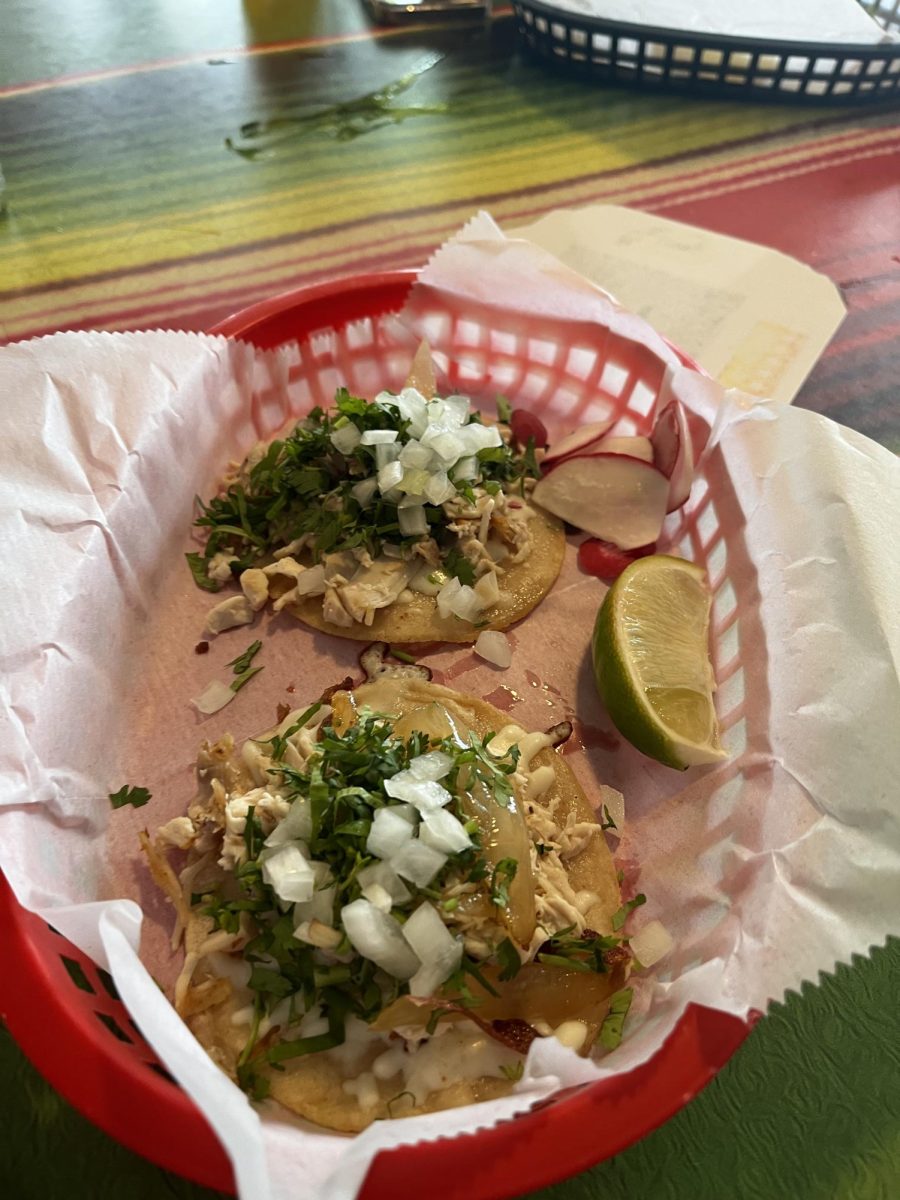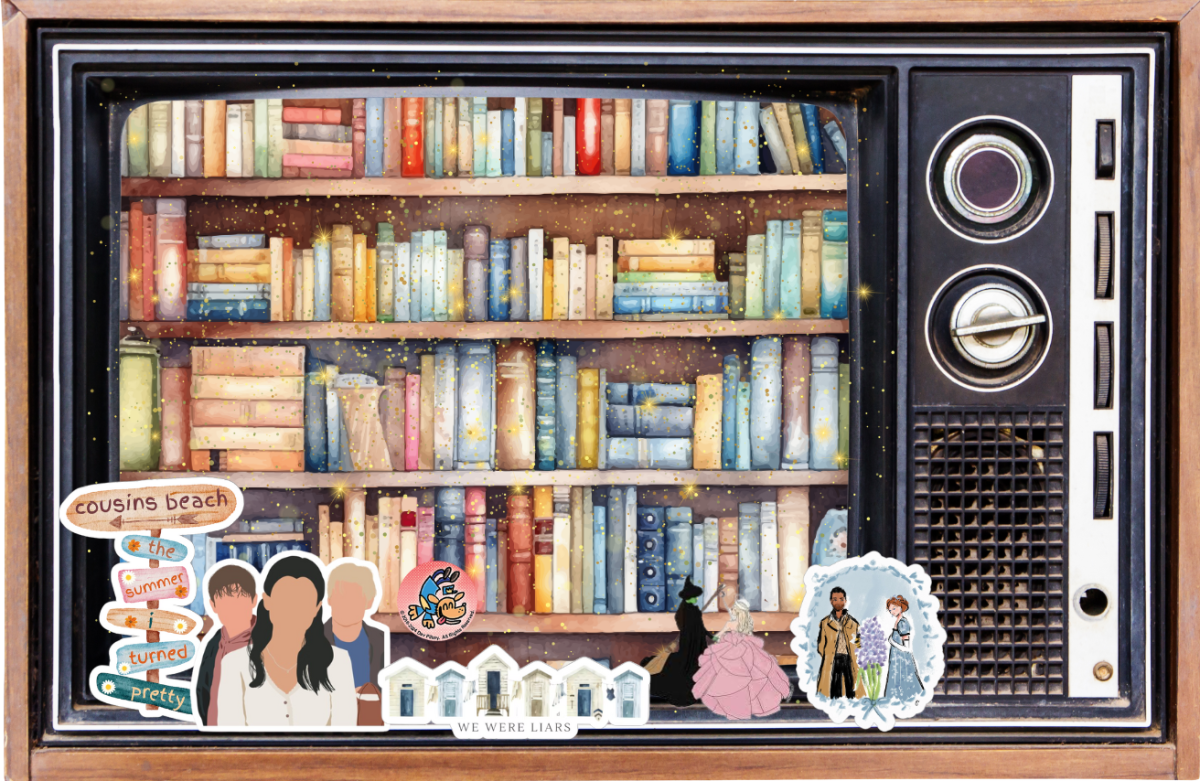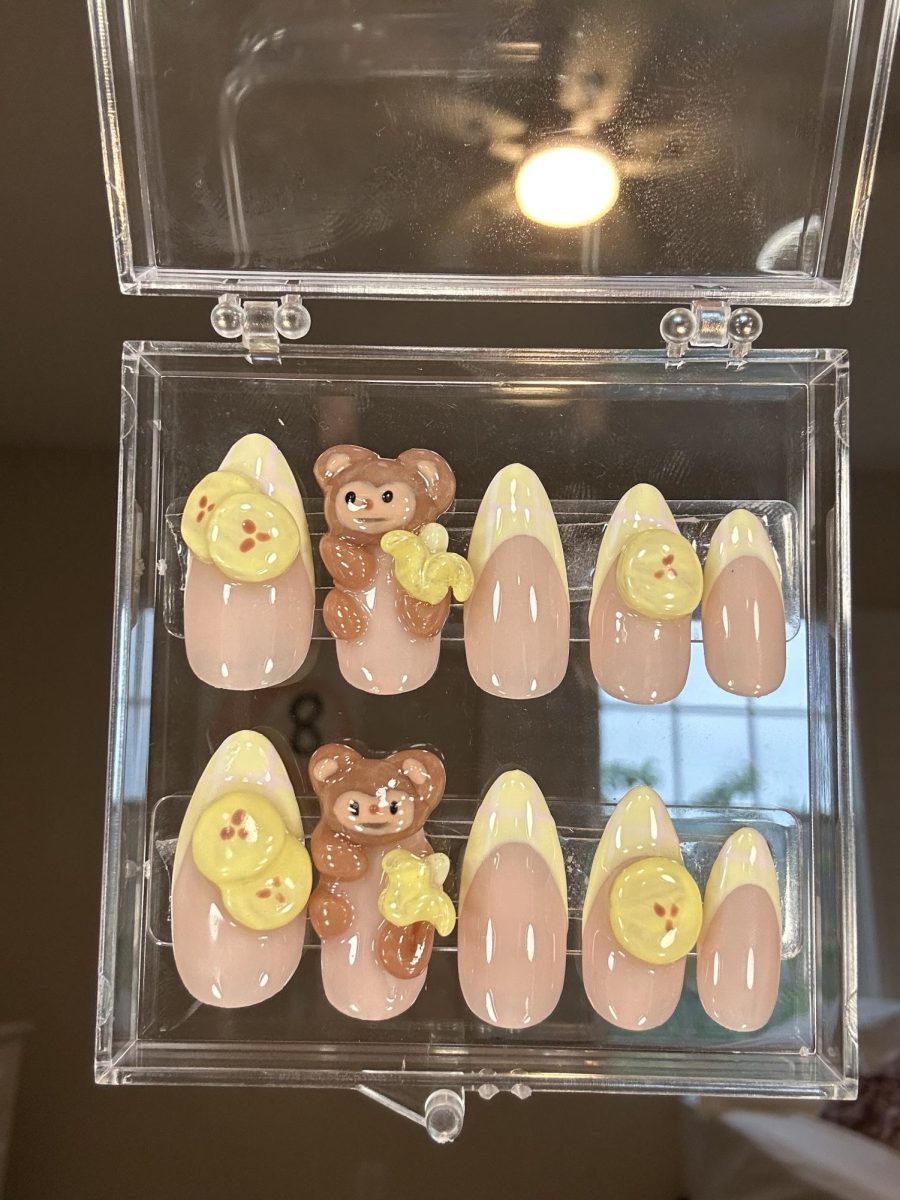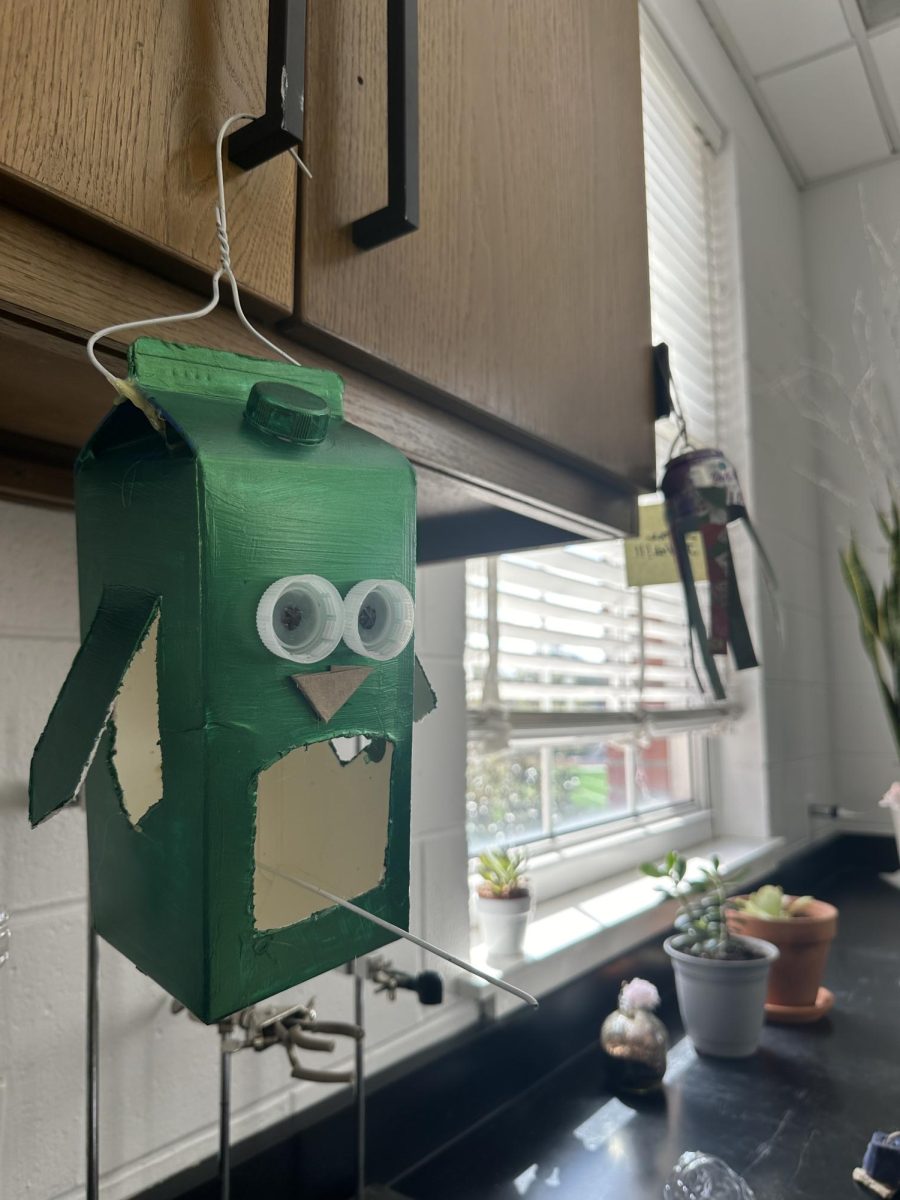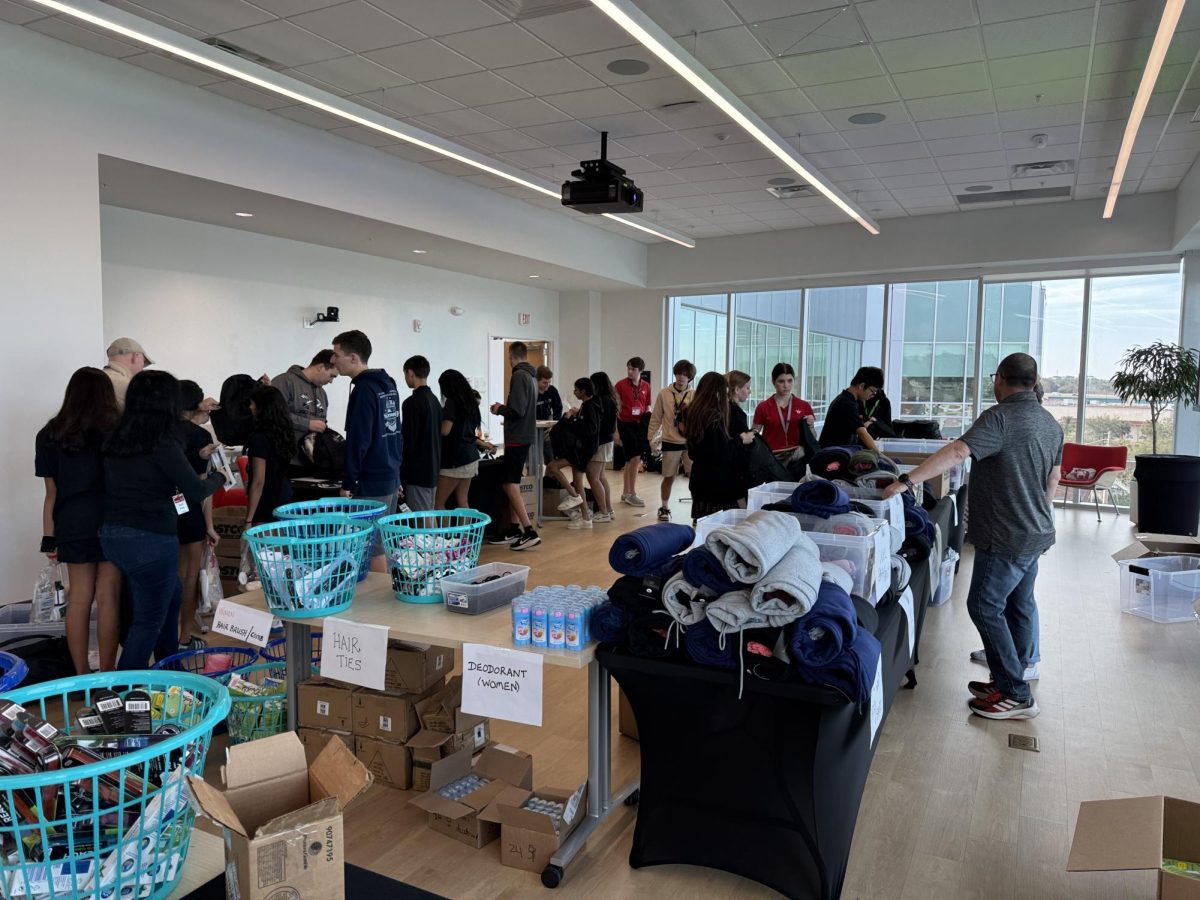Did you know that approximately 2.12 billion tons of waste are produced all over the world every single year? Additionally, 99% of what we buy is trashed within six months, according to thecircular.org. Upcycling is the act of transforming trash into something creative with a new purpose. Although upcycling is common in countries where resources are limited, most Americans choose to buy something new instead. This generates more trash, which produces increased groundwater pollution and air toxins, as well as habitat destruction. The health of our environment is at risk, and the earth cannot keep up with the current rate of trash piling up.
Fortunately, AP Environmental Science teacher Mrs. Lisa Castro held an extra credit opportunity after Winter Break for her students to harness their creativity skills and upcycle anything of their choosing. She explains, “I wanted to create this assignment because trash is something that we all produce but put very little thought into. It is a true example of ‘Out of sight, out of mind.’ The goal of this assignment is to make students aware of the trash that they produce.” Aligning with our unit on atmospheric pollution, this optional project was not only a way to practice what we were learning hands-on, but also have a positive effect on our environment. Many students enjoyed going beyond the usual lectures and getting crafty.
One of the best parts about upcycling is that there are no rules! There is no right or wrong for what you are creating with your trash. Anything that is not being actively used can be upcycled. This can include trash like cereal boxes, food wrappers, and water bottles, or it can be anything that is lying around the house that is not in use. Mrs. Castro comments, “I think we all have a t-shirt that is sitting at the bottom of the drawer that we haven’t touched in three years. Something like that can be used to find a new purpose!” Personally, one of her favorite things to upcycle is the brown stuffing paper from Amazon boxes. She upcycles it as wrapping paper for gifts, saving money on buying wrapping paper for birthdays and the holidays. Not only does repurposing packing paper cut back on expenses, it also saves on the amount of trash produced, decreasing the volume of local landfills.
As someone who is very passionate about the environment and public health, I was more than excited to participate in this extra credit opportunity. While upcycling has many benefits for the environment, it’s also a super fun way to think outside of the box. I believe that the majority of Americans turn a blind eye to just how much trash they produce on a daily basis. This ignorance will cycle back in the long run even though we can’t see it now. Thankfully, we’re lucky enough to have access to such effective and organized waste management programs under the City of Orlando.
For my project, I made a candle out of a large seashell and leftover candle wax. I even made a handle for the candle out of smaller seashells. Additionally, I crocheted a pocket wallet out of discarded yarn. Brynnley Moore, grade 12, made a mini clutch bag using plastic Publix bags. She cut two-inch strip pieces and tied them together to make one long strip so that she could crochet them like yarn. Brynnley also used a needle with thread to sew a handle onto it and then used a lighter to burn any pieces sticking out. She says, “I liked that I could reuse something that traditionally is thrown away and give it a new purpose since so many Publix bags are not recycled.
Although upcycling is easier than people may think, one major challenge many struggle with is the creativity required or finding what exactly to transform their trash into. However, the internet has endless inspiration, especially on social media platforms like TikTok and Pinterest. Sienna Nichoson, grade 12, transformed a discarded, small water bottle into a piggy bank, decorating it with cardboard and paper scraps and coloring it pink. She shares that she got the idea from scrolling through Pinterest. Many students like Sienna drew inspiration from searching for ideas on the internet.
Trash production has always been increasing over time, which has turned into a big environmental problem. Finding new ways to keep items out of landfills can help solve issues related to the air we breathe and the water we drink. The release of toxic chemicals, illegal dumping, and leachate can damage both human health and local ecosystems. The National Oceanic and Atmospheric Administration states, “Litter plays a significant role in damaging our marine environment. Discarded plastics, metal, and other types of trash not only degrade the aesthetic beauty of an area, but they can leach harmful chemicals into the environment. They can also contribute to disease transmission.” So, the next time you decide to throw out a can of soda from lunch or an old t-shirt you never wear, consider upcycling as the better alternative and save the environment!
